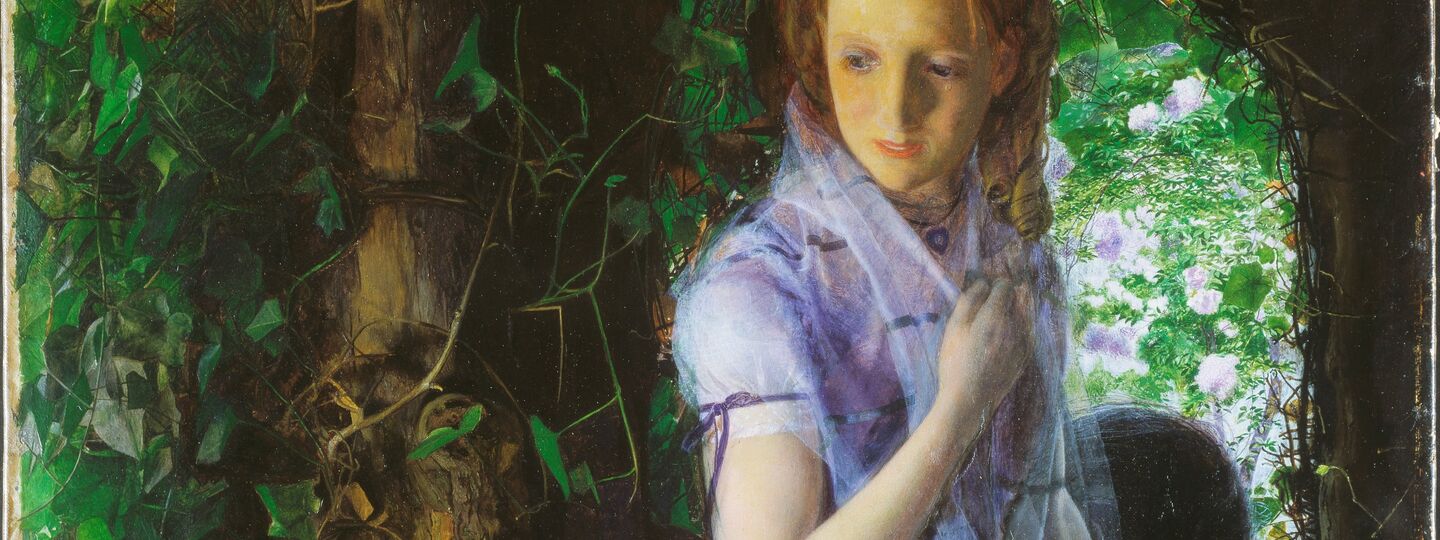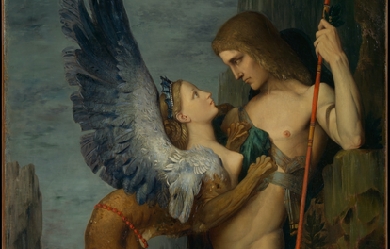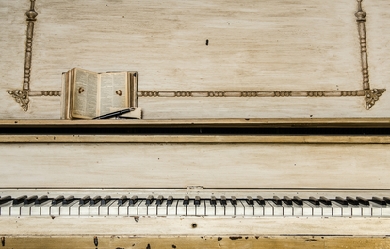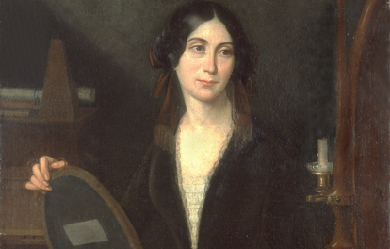
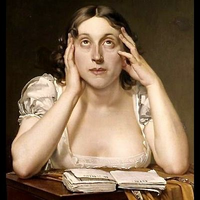
Marceline Desbordes-Valmore, née le 20 juin 1786 à Douai et morte le 23 juillet 1859 à Paris, est une poétesse française. Marceline est la fille de Catherine Lucas et Félix Desbordes, un peintre en armoiries, devenu cabaretier à Douai après avoir été ruiné par la Révolution. Fin 1801, après un séjour à Rochefort et un autre à Bordeaux, la jeune fille de 15 ans et sa mère embarquent pour la Guadeloupe afin de chercher une aide financière chez un cousin aisé, installé là-bas.

I am a very interesting person. I have been through hell and back, but I have decided to continuously go forward. I have been abused sexually, physically, and emotionally and I am a living testimony that can testify as to how a person can come out of any situation! Email me sometime to find out more questions or feel free to leave comments on my poems and entries. Thanks in advance!!
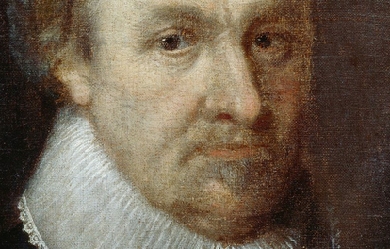
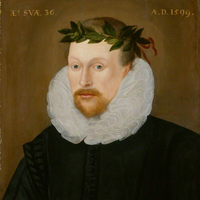
Michael Drayton (1563– 23 December 1631) was an English poet who came to prominence in the Elizabethan era. Early life Drayton was born at Hartshill, near Nuneaton, Warwickshire, England. Almost nothing is known about his early life, beyond the fact that in 1580 he was in the service of Thomas Goodere of Collingham, Nottinghamshire. Nineteenth– and twentieth-century scholars, on the basis of scattered allusions in his poems and dedications, suggested that Drayton might have studied at the University of Oxford, and been intimate with the Polesworth branch of the Goodere family. More recent work has cast doubt on those speculations. Literary career 1591–1602 In 1591 he produced his first book, The Harmony of the Church, a volume of spiritual poems, dedicated to Lady Devereux. It is notable for a version of the Song of Solomon, executed with considerable richness of expression. However, with the exception of forty copies, seized by the Archbishop of Canterbury, the whole edition was destroyed by public order. Nevertheless, Drayton published a vast amount within the next few years. In 1593 appeared Idea: The Shepherd’s Garland, a collection of nine pastorals, in which he celebrated his own love-sorrows under the poetic name of Rowland. The basic idea was expanded in a cycle of sixty-four sonnets, published in 1594, under the title of Idea’s Mirror, by which we learn that the lady lived by the river Ankor in Warwickshire. It appears that he failed to win his “Idea,” and lived and died a bachelor. It has been said Drayton’s sonnets possess a direct, instant, and universal appeal, by reason of their simple straightforward ring and foreshadowed the smooth style of Fairfax, Waller, and Dryden. Drayton was the first to bring the term ode, for a lyrical poem, to popularity in England and was a master of the short, staccato Anacreontics measure. Also in 1593 there appeared the first of Drayton’s historical poems, The Legend of Piers Gaveston, and the next year saw the publication of Matilda, an epic poem in rhyme royal. It was about this time, too, that he brought out Endimion and Phoebe, a volume which he never republished, but which contains some interesting autobiographical matter, and acknowledgments of literary help from Thomas Lodge, if not from Edmund Spenser and Samuel Daniel also. In his Fig for Momus, Lodge reciprocated these friendly courtesies. In 1596 Drayton published his long and important poem Mortimeriados, a very serious production in ottava rima. He later enlarged and modified this poem, and republished it in 1603 under the title of The Barons’ Wars. In 1596 also appeared another historical poem, The Legend of Robert, Duke of Normandy, with which Piers Gaveston was reprinted. In 1597 appeared England’s Heroical Epistles, a series of historical studies, in imitation of those of Ovid. These last poems, written in the heroic couplet, contain some of the finest passages in Drayton’s writings. 1603–1631 By 1597, the poet was resting on his laurels. It seems that he was much favoured at the court of Elizabeth, and he hoped that it would be the same with her successor. But when, in 1603, he addressed a poem of compliment to James I, on his accession, it was ridiculed, and his services rudely rejected. His bitterness found expression in a satire, The Owl (1604), but he had no talent in this kind of composition. Not much more entertaining was his scriptural narrative of Moses in a Map of his Miracles, a sort of epic in heroics printed the same year. In 1605 Drayton reprinted his most important works, his historical poems and the Idea, in a single volume which ran through eight editions during his lifetime. He also collected his smaller pieces, hitherto unedited, in a volume undated, but probably published in 1605, under the title of Poems Lyric and Pastoral; these consisted of odes, eclogues, and a fantastic satire called The Man in the Moon. Some of the odes are extremely spirited. In this volume he printed for the first time the famous Ballad of Agincourt. He had adopted as early as 1598 the extraordinary resolution of celebrating all the points of topographical or antiquarian interest in the island of Great Britain, and on this laborious work he was engaged for many years. At last, in 1613, the first part of this vast work was published under the title of Poly-Olbion, eighteen books being produced, to which the learned Selden supplied notes. The success of this great work, which has since become so famous, was very small at first, and not until 1622 did Drayton succeed in finding a publisher willing to undertake the risk of bringing out twelve more books in a second part. This completed the survey of England, and the poet, who had hoped “to crown Scotland with flowers,” and arrive at last at the Orcades, never crossed the Tweed. In 1627 he published another of his miscellaneous volumes, and this contains some of his most characteristic writing. It consists of the following pieces: The Battle of Agincourt, an historical poem in ottava rima (not to be confused with his ballad on the same subject), and The Miseries of Queen Margaret, written in the same verse and manner; Nimphidia, the Court of Faery, a most joyous and graceful little epic of fairyland; The Quest of Cinthia and The Shepherd’s Sirena, two lyrical pastorals; and finally The Moon Calf, a sort of satire. Nimphidia is the most critically acclaimed, along with his famous ballad on the battle of Agincourt; it is quite unique of its kind and full of rare fantastic fancy. The last of Drayton’s voluminous publications was The Muses’ Elizium in 1630. He died in London, was buried in Poets’ Corner in Westminster Abbey, and had a monument placed over him by the Countess of Dorset, with memorial lines attributed to Ben Jonson. Theatre Like other poets of his era, Drayton was active in writing for the theatre; but unlike Shakespeare, Ben Jonson, or Samuel Daniel, he invested little of his art in the genre. For a period of only five years, from 1597 to 1602, Drayton was a member of the stable of playwrights who supplied material for the theatrical syndicate of Philip Henslowe. Henslowe’s Diary links Drayton’s name with 23 plays from that period, and shows that Drayton almost always worked in collaboration with other Henslowe regulars, like Thomas Dekker, Anthony Munday, and Henry Chettle, among others. Of these 23 plays, only one has survived, that being Part 1 of Sir John Oldcastle, which Drayton composed in collaboration with Munday, Robert Wilson, and Richard Hathwaye. The text of Oldcastle shows no clear signs of Drayton’s hand; traits of style consistent through the entire corpus of his poetry (the rich vocabulary of plant names, star names, and other unusual words; the frequent use of original contractional forms, sometimes with double apostrophes, like “th’adult’rers” or “pois’ned’st”) are wholly absent from the text, suggesting that his contribution to the collaborative effort was not substantial. William Longsword, the one play that Henslowe’s Diary suggests was a solo Drayton effort, was never completed. (Drayton may have preferred the role of impresario to that of playwright; he was one of the lessees of the Whitefriars Theatre, together with Thomas Woodford, nephew of the playwright Thomas Lodge, when it was started in 1608. Around 1606, Drayton was also part of a syndicate that chartered a company of child actors, The Children of the King’s Revels. These may or may not have been the Children of Paul’s under a new name, since the latter group appears to have gone out of existence at about this time. The venture was not a success, dissolving in litigation in 1609.) Friendships Drayton was a friend of some of the most famous men of the age. He corresponded familiarly with Drummond; Ben Jonson, William Browne, George Wither and others were among his friends. There is a tradition that he was a friend of Shakespeare, supported by a statement of John Ward, once vicar of Stratford-on-Avon, that “Shakespear, Drayton and Ben Jonson had a merry meeting, and it seems, drank too hard, for Shakespear died of a feavour there contracted.” In one of his poems, an elegy or epistle to Mr Henry Reynolds, he has left some valuable criticisms on poets whom he had known. That he was a restless and discontented, as well as a worthy, man may be gathered from his own admissions. Editions In 1748 a folio edition of Drayton’s complete works was published under the editorial supervision of William Oldys, and again in 1753 there appeared an issue in four volumes quarto. But these were very unintelligently and inaccurately prepared. A complete edition of Drayton’s works with variant readings was projected by Richard Hooper in 1876, but was never carried to a conclusion; a volume of selections, edited by A. H. Bullen, appeared in 1883. See especially Oliver Elton, Michael Drayton (1906). A complete five-volume edition of Drayton’s work was published by Oxford in 1931-41 (revised 1961), edited by J. William Hebel, K. Tillotson and B. H. Newdigate. That and a two volume edition of Drayton’s poems published at Harvard in 1953, edited by John Buxton, are the only 20th century editions of his poems recorded by the Library of Congress. References Wikipedia—https://en.wikipedia.org/wiki/Michael_Drayton
Nací un día de enero de 1986, no sabía lo que venía. De hecho no sabía que existía. Hoy lo sé y me gusta saberlo, lo disfruto, me gusta. Soy payaso, acróbata y juego a cada instante. Tengo paciencia y ganas. Me gusta comunicarme de maneras atípicas, me gusta lo inentendible, el movimiento. Gracias por llegar aquí.
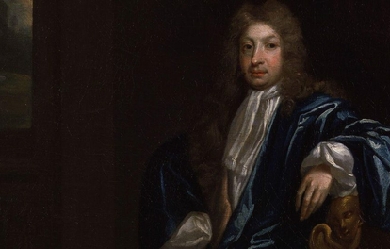
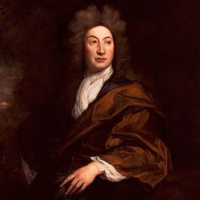
John Dryden (19 August [O.S. 9 August] 1631– 12 May [O.S. 1 May] 1700) was an English poet, literary critic, translator, and playwright who was made Poet Laureate in 1668. He is seen as dominating the literary life of Restoration England to such a point that the period came to be known in literary circles as the Age of Dryden. Walter Scott called him “Glorious John.” Early life Dryden was born in the village rectory of Aldwincle near Thrapston in Northamptonshire, where his maternal grandfather was Rector of All Saints. He was the eldest of fourteen children born to Erasmus Dryden and wife Mary Pickering, paternal grandson of Sir Erasmus Dryden, 1st Baronet (1553–1632) and wife Frances Wilkes, Puritan landowning gentry who supported the Puritan cause and Parliament. He was a second cousin once removed of Jonathan Swift. As a boy Dryden lived in the nearby village of Titchmarsh, Northamptonshire where it is likely that he received his first education. In 1644 he was sent to Westminster School as a King’s Scholar where his headmaster was Dr. Richard Busby, a charismatic teacher and severe disciplinarian. Having recently been re-founded by Elizabeth I, Westminster during this period embraced a very different religious and political spirit encouraging royalism and high Anglicanism. Whatever Dryden’s response to this was, he clearly respected the Headmaster and would later send two of his sons to school at Westminster. As a humanist public school, Westminster maintained a curriculum which trained pupils in the art of rhetoric and the presentation of arguments for both sides of a given issue. This is a skill which would remain with Dryden and influence his later writing and thinking, as much of it displays these dialectical patterns. The Westminster curriculum included weekly translation assignments which developed Dryden’s capacity for assimilation. This was also to be exhibited in his later works. His years at Westminster were not uneventful, and his first published poem, an elegy with a strong royalist feel on the death of his schoolmate Henry, Lord Hastings from smallpox, alludes to the execution of King Charles I, which took place on 30 January 1649, very near the school where Dr. Busby had first prayed for the King and then locked in his schoolboys to prevent their attending the spectacle. In 1650 Dryden went up to Trinity College, Cambridge. Here he would have experienced a return to the religious and political ethos of his childhood: the Master of Trinity was a Puritan preacher by the name of Thomas Hill who had been a rector in Dryden’s home village. Though there is little specific information on Dryden’s undergraduate years, he would most certainly have followed the standard curriculum of classics, rhetoric, and mathematics. In 1654 he obtained his BA, graduating top of the list for Trinity that year. In June of the same year Dryden’s father died, leaving him some land which generated a little income, but not enough to live on. Returning to London during The Protectorate, Dryden obtained work with Cromwell’s Secretary of State, John Thurloe. This appointment may have been the result of influence exercised on his behalf by his cousin the Lord Chamberlain, Sir Gilbert Pickering. At Cromwell’s funeral on 23 November 1658 Dryden processed with the Puritan poets John Milton and Andrew Marvell. Shortly thereafter he published his first important poem, Heroic Stanzas (1658), a eulogy on Cromwell’s death which is cautious and prudent in its emotional display. In 1660 Dryden celebrated the Restoration of the monarchy and the return of Charles II with Astraea Redux, an authentic royalist panegyric. In this work the interregnum is illustrated as a time of anarchy, and Charles is seen as the restorer of peace and order. Later life and career After the Restoration, as Dryden quickly established himself as the leading poet and literary critic of his day, he transferred his allegiances to the new government. Along with Astraea Redux, Dryden welcomed the new regime with two more panegyrics: To His Sacred Majesty: A Panegyric on his Coronation (1662) and To My Lord Chancellor (1662). These poems suggest that Dryden was looking to court a possible patron, but he was to instead make a living in writing for publishers, not for the aristocracy, and thus ultimately for the reading public. These, and his other nondramatic poems, are occasional—that is, they celebrate public events. Thus they are written for the nation rather than the self, and the Poet Laureate (as he would later become) is obliged to write a certain number of these per annum. In November 1662 Dryden was proposed for membership in the Royal Society, and he was elected an early fellow. However, Dryden was inactive in Society affairs and in 1666 was expelled for non-payment of his dues. On 1 December 1663 Dryden married the royalist sister of Sir Robert Howard—Lady Elizabeth. Dryden’s works occasionally contain outbursts against the married state but also celebrations of the same. Thus, little is known of the intimate side of his marriage. Lady Elizabeth bore three sons and outlived her husband. With the reopening of the theatres after the Puritan ban, Dryden wrote plays. His first play, The Wild Gallant, appeared in 1663 and was not successful but was still promising, and from 1668 on he was contracted to produce three plays a year for the King’s Company in which he became a shareholder. During the 1660s and '70s, theatrical writing was his main source of income. He led the way in Restoration comedy, his best-known work being Marriage à la Mode (1672), as well as heroic tragedy and regular tragedy, in which his greatest success was All for Love (1678). Dryden was never satisfied with his theatrical writings and frequently suggested that his talents were wasted on unworthy audiences. He thus was making a bid for poetic fame off-stage. In 1667, around the same time his dramatic career began, he published Annus Mirabilis, a lengthy historical poem which described the English defeat of the Dutch naval fleet and the Great Fire of London in 1666. It was a modern epic in pentameter quatrains that established him as the preeminent poet of his generation, and was crucial in his attaining the posts of Poet Laureate (1668) and historiographer royal (1670). When the Great Plague of London closed the theatres in 1665 Dryden retreated to Wiltshire where he wrote Of Dramatick Poesie (1668), arguably the best of his unsystematic prefaces and essays. Dryden constantly defended his own literary practice, and Of Dramatick Poesie, the longest of his critical works, takes the form of a dialogue in which four characters–each based on a prominent contemporary, with Dryden himself as 'Neander’—debate the merits of classical, French and English drama. The greater part of his critical works introduce problems which he is eager to discuss, and show the work of a writer of independent mind who feels strongly about his own ideas, ideas which demonstrate the breadth of his reading. He felt strongly about the relation of the poet to tradition and the creative process, and his best heroic play Aureng-zebe (1675) has a prologue which denounces the use of rhyme in serious drama. His play All for Love (1678) was written in blank verse, and was to immediately follow Aureng-Zebe. On 18 December 1679 he was attacked in Rose Alley near his home in Covent Garden by thugs hired by John Wilmot, 2nd Earl of Rochester, with whom he had a long-standing conflict. Dryden’s greatest achievements were in satiric verse: the mock-heroic Mac Flecknoe, a more personal product of his Laureate years, was a lampoon circulated in manuscript and an attack on the playwright Thomas Shadwell. Dryden’s main goal in the work is to “satirize Shadwell, ostensibly for his offenses against literature but more immediately we may suppose for his habitual badgering of him on the stage and in print.” It is not a belittling form of satire, but rather one which makes his object great in ways which are unexpected, transferring the ridiculous into poetry. This line of satire continued with Absalom and Achitophel (1681) and The Medal (1682). His other major works from this period are the religious poems Religio Laici (1682), written from the position of a member of the Church of England; his 1683 edition of Plutarch’s Lives Translated From the Greek by Several Hands in which he introduced the word biography to English readers; and The Hind and the Panther, (1687) which celebrates his conversion to Roman Catholicism. He wrote Britannia Rediviva celebrating the birth of a son and heir to the Catholic King and Queen on 10 June 1688. When later in the same year James II was deposed in the Glorious Revolution, Dryden’s refusal to take the oaths of allegiance to the new monarchs, William and Mary, left him out of favour at court. Thomas Shadwell succeeded him as Poet Laureate, and he was forced to give up his public offices and live by the proceeds of his pen. Dryden translated works by Horace, Juvenal, Ovid, Lucretius, and Theocritus, a task which he found far more satisfying than writing for the stage. In 1694 he began work on what would be his most ambitious and defining work as translator, The Works of Virgil (1697), which was published by subscription. The publication of the translation of Virgil was a national event and brought Dryden the sum of £1,400. His final translations appeared in the volume Fables Ancient and Modern (1700), a series of episodes from Homer, Ovid, and Boccaccio, as well as modernised adaptations from Geoffrey Chaucer interspersed with Dryden’s own poems. As a translator, he made great literary works in the older languages available to readers of English. Dryden died on 12 May 1700, and was initially buried in St. Anne’s cemetery in Soho, before being exhumed and reburied in Westminster Abbey ten days later. He was the subject of poetic eulogies, such as Luctus Brittannici: or the Tears of the British Muses; for the Death of John Dryden, Esq. (London, 1700), and The Nine Muses. A Royal Society of Arts blue plaque commemorates Dryden at 43 Gerrard Street in London’s Chinatown. He lived at 137 Long Acre from 1682 to 1686 and at 43 Gerrard Street from 1686 until his death. Reputation and influence Dryden was the dominant literary figure and influence of his age. He established the heroic couplet as a standard form of English poetry by writing successful satires, religious pieces, fables, epigrams, compliments, prologues, and plays with it; he also introduced the alexandrine and triplet into the form. In his poems, translations, and criticism, he established a poetic diction appropriate to the heroic couplet—Auden referred to him as “the master of the middle style”—that was a model for his contemporaries and for much of the 18th century. The considerable loss felt by the English literary community at his death was evident in the elegies written about him. Dryden’s heroic couplet became the dominant poetic form of the 18th century. Alexander Pope was heavily influenced by Dryden and often borrowed from him; other writers were equally influenced by Dryden and Pope. Pope famously praised Dryden’s versification in his imitation of Horace’s Epistle II.i: "Dryden taught to join / The varying pause, the full resounding line, / The long majestic march, and energy divine." Samuel Johnson summed up the general attitude with his remark that “the veneration with which his name is pronounced by every cultivator of English literature, is paid to him as he refined the language, improved the sentiments, and tuned the numbers of English poetry.” His poems were very widely read, and are often quoted, for instance, in Tom Jones and Johnson’s essays. Johnson also noted, however, that “He is, therefore, with all his variety of excellence, not often pathetic; and had so little sensibility of the power of effusions purely natural, that he did not esteem them in others. Simplicity gave him no pleasure.” Readers in the first half of the 18th century did not mind this too much, but later generations considered Dryden’s absence of sensibility a fault. One of the first attacks on Dryden’s reputation was by Wordsworth, who complained that Dryden’s descriptions of natural objects in his translations from Virgil were much inferior to the originals. However, several of Wordsworth’s contemporaries, such as George Crabbe, Lord Byron, and Walter Scott (who edited Dryden’s works), were still keen admirers of Dryden. Besides, Wordsworth did admire many of Dryden’s poems, and his famous “Intimations of Immortality” ode owes something stylistically to Dryden’s “Alexander’s Feast”. John Keats admired the “Fables”, and imitated them in his poem Lamia. Later 19th century writers had little use for verse satire, Pope, or Dryden; Matthew Arnold famously dismissed them as “classics of our prose.” He did have a committed admirer in George Saintsbury, and was a prominent figure in quotation books such as Bartlett’s, but the next major poet to take an interest in Dryden was T. S. Eliot, who wrote that he was 'the ancestor of nearly all that is best in the poetry of the eighteenth century’, and that ‘we cannot fully enjoy or rightly estimate a hundred years of English poetry unless we fully enjoy Dryden.’ However, in the same essay, Eliot accused Dryden of having a “commonplace mind.” Critical interest in Dryden has increased recently, but, as a relatively straightforward writer (William Empson, another modern admirer of Dryden, compared his “flat” use of language with Donne’s interest in the “echoes and recesses of words”) his work has not occasioned as much interest as Andrew Marvell’s or John Donne’s or Pope’s. Dryden is believed to be the first person to posit that English sentences should not end in prepositions because Latin sentences cannot end in prepositions. Dryden created the prescription against preposition stranding in 1672 when he objected to Ben Jonson’s 1611 phrase the bodies that those souls were frighted from, although he did not provide an explanation of the rationale that gave rise to his preference. The phrase “blaze of glory” is believed to have originated in Dryden’s 1686 poem The Hind and the Panther, referring to the throne of God as a “blaze of glory that forbids the sight.” Poetic style What Dryden achieved in his poetry was neither the emotional excitement of the early nineteenth-century romantics nor the intellectual complexities of the metaphysicals. His subject matter was often factual, and he aimed at expressing his thoughts in the most precise and concentrated manner. Although he uses formal structures such as heroic couplets, he tried to recreate the natural rhythm of speech, and he knew that different subjects need different kinds of verse. In his preface to Religio Laici he says that “the expressions of a poem designed purely for instruction ought to be plain and natural, yet majestic... The florid, elevated and figurative way is for the passions; for (these) are begotten in the soul by showing the objects out of their true proportion.... A man is to be cheated into passion, but to be reasoned into truth.” Translation style While Dryden had many admirers, he also had his share of critics, Mark Van Doren among them. Doren complained that in translating Vergil’s Aeneid, Dryden had added “a fund of phrases with which he could expand any passage that seemed to him curt”. Dryden did not feel such expansion was a fault, arguing that as Latin is a naturally concise language it cannot be duly represented by a comparable number of words in English. "He... recognized that Vergil 'had the advantage of a language wherein much may be comprehended in a little space’ (5:329–30). The 'way to please the best Judges... is not to Translate a Poet literally; and Virgil least of any other’ (5:329)" For example, take lines 789–795 of Book 2 when Aeneas sees and receives a message from the ghost of his wife, Creusa. iamque vale et nati serva communis amorem.' haec ubi dicta dedit, lacrimantem et multa volentem dicere deseruit, tenuisque recessit in auras. ter conatus ibi collo dare bracchia circum; ter frustra comprensa manus effugit imago, par levibus ventis volucrique simillima somno. sic demum socios consumpta nocte reviso Dryden translates it like this: I trust our common issue to your care.' She said, and gliding pass'd unseen in air. I strove to speak: but horror tied my tongue; And thrice about her neck my arms I flung, And, thrice deceiv'd, on vain embraces hung. Light as an empty dream at break of day, Or as a blast of wind, she rush'd away. Thus having pass'd the night in fruitless pain, I to my longing friends return again Dryden’s translation is based on presumed authorial intent and smooth English. In line 790 the literal translation of "haec ubi dicta dedit” is "when she gave these words.” But "she said” gets the point across, uses half the words, and makes for better English. A few lines later, with “ter conatus ibi collo dare bracchia circum; ter frustra comprensa manus effugit imago”, he alters the literal translation “Thrice trying to give arms around her neck; thrice the image grasped in vain fled the hands”, in order to fit it into meter and the emotion of the scene. In his own words, The way I have taken, is not so streight as Metaphrase, nor so loose as Paraphrase: Some things too I have omitted, and sometimes added of my own. Yet the omissions I hope, are but of Circumstances, and such as wou'd have no grace in English; and the Addition, I also hope, are easily deduc'd from Virgil's Sense. They will seem (at least I have the Vanity to think so), not struck into him, but growing out of him. (5:529) In a similar vein, Dryden writes in his Preface to the translation anthology Sylvae: Where I have taken away some of [the original authors’] Expressions, and cut them shorter, it may possibly be on this consideration, that what was beautiful in the Greek or Latin, would not appear so shining in the English; and where I have enlarg’d them, I desire the false Criticks would not always think that those thoughts are wholly mine, but that either they are secretly in the Poet, or may be fairly deduc’d from him; or at least, if both those considerations should fail, that my own is of a piece with his, and that if he were living, and an Englishman, they are such as he wou’d probably have written. Family On 1 December 1663 Dryden married Lady Elizabeth Howard (died 1714). The marriage was at St. Swithin’s, London, and the consent of the parents is noted on the license, though Lady Elizabeth was then about twenty-five. She was the object of some scandals, well or ill founded; it was said that Dryden had been bullied into the marriage by her brothers. A small estate in Wiltshire was settled upon them by her father. The lady’s intellect and temper were apparently not good; her husband was treated as an inferior by those of her social status. Both Dryden and his wife were warmly attached to their children. They had three sons: Charles (1666–1704), John (1668–1701), and Erasmus Henry (1669–1710). Lady Elizabeth Dryden survived her husband, but went insane soon after his death. Though some have historically claimed to be from the lineage of John Dryden, his three children had no children themselves. Selected works * Astraea Redux, 1660 * The Wild Gallant (comedy), 1663 * The Indian Emperour (tragedy), 1665 * Annus Mirabilis (poem), 1667 * The Tempest, or The Enchanted Island (comedy), 1667, an adaptation with William D’Avenant of Shakespeare’s The Tempest * Secret Love, or The Maiden Queen, 1667 * An Essay of Dramatick Poesie, 1668 * An Evening’s Love (comedy), 1668 * Tyrannick Love (tragedy), 1669 * The Conquest of Granada, 1670 * The Assignation, or Love in a Nunnery, 1672 * Marriage à la mode, 1672 * Amboyna, or the Cruelties of the Dutch to the English Merchants, 1673 * The Mistaken Husband (comedy), 1674 * Aureng-zebe, 1675 * All for Love, 1678 * Oedipus (heroic drama), 1679, an adaptation with Nathaniel Lee of Sophocles’ Oedipus * Absalom and Achitophel, 1681 * The Spanish Fryar, 1681 * Mac Flecknoe, 1682 * The Medal, 1682 * Religio Laici, 1682 * Threnodia Augustalis, 1685 * The Hind and the Panther, 1687 * A Song for St. Cecilia’s Day, 1687 * Britannia Rediviva, 1688, written to mark the birth of a Prince of Wales. * Epigram on Milton, 1688 * Amphitryon, 1690 * Don Sebastian (play), 1690 * Creator Spirit, by whose aid, 1690. Translation of Rabanus Maurus’ Veni Creator Spiritus * King Arthur, 1691 * Cleomenes, 1692 * Love Triumphant, 1694 * The Works of Virgil, 1697 * Alexander’s Feast, 1697 * Fables, Ancient and Modern, 1700 * The Art of Satire * To the Memory of Mr. Oldham, 1684 References Wikipedia—https://en.wikipedia.org/wiki/John_Dryden
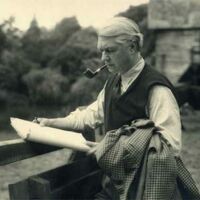
John Drinkwater (1 June 1882 – 25 March 1937) was an English poet and dramatist. Drinkwater was born in Leytonstone, London, and worked as an insurance clerk. In the period immediately before the First World War he was one of the group of poets associated with the Gloucestershire village of Dymock, along with Rupert Brooke and others. In 1919 he had his first major success with his play Abraham Lincoln. He followed it with others in a similar vein, including Mary Stuart and Oliver Cromwell. In 1924, his Lincoln play was adapted for a two-reel short film made by Lee DeForest and J. Searle Dawley featuring Frank McGlynn Sr. as Lincoln, and made in DeForest's Phonofilm sound-on-film process. He had published poetry since The Death of Leander in 1906; the first volume of his Collected Poems was published in 1923. He also compiled anthologies and wrote literary criticism (e.g. Swinburne: an estimate (1913)), and later became manager of Birmingham Repertory Theatre. He was married to Daisy Kennedy, the ex-wife of Benno Moiseiwitsch. Papers relating to John Drinkwater and collected by his stepdaughter are held at the University of Birmingham Special Collections. John Drinkwater made recordings in Columbia Records' International Educational Society Lecture series. They include Lecture 10 – a lecture on The Speaking of Verse (Four 78rpm sides, Cat no. D 40018-40019), and Lecture 70 John Drinkwater reading his own poems (Four 78rpm sides, Cat no. D 40140-40141). Death and commemoration Drinkwater died in London in 1937. He is buried at Piddington, Oxfordshire, where he had spent summer holidays as a child. A road in Leytonstone, formerly a 1960s council estate, is named after Drinkwater, as is a small development of modern houses in Piddington. References Wikipedia – en.wikipedia.org/wiki/John_Drinkwater_(playwright)


I am a single father, I am a son and I am a brother but to all I am a friend. My life revolves around all that I love and all that I love means I will keep on breathing and trying. I am mid 40's with a long and fruitful life ahead dreaming of calm and serenity in all I do. I am not "that" outgoing but enjoy time away with family and friends. Life now has become a place where I can watch the fruits of our labor ripen. "As we age and as we live life becomes less of a riddle and more of a poem"
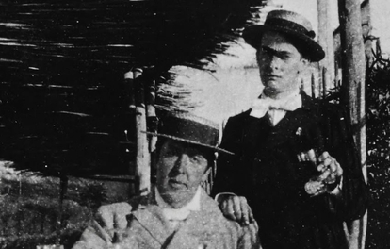
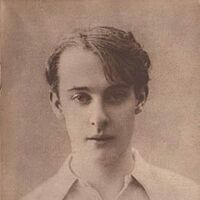
Lord Alfred Bruce Douglas (22 October 1870 – 20 March 1945), nicknamed Bosie, was a British author, poet and translator, better known as the intimate friend and lover of the writer Oscar Wilde. Much of his early poetry was Uranian in theme, though he tended, later in life, to distance himself from both Wilde's influence and his own role as a Uranian poet. Early life and background The third son of John Douglas, 9th Marquess of Queensberry and his first wife, Sibyl née Montgomery, Douglas was born at Ham Hill House in Worcestershire. He was his mother's favourite child; she called him Bosie (a derivative of Boysie), a nickname which stuck for the rest of his life. Douglas was educated at Winchester College (1884–88) and at Magdalen College, Oxford (1889–93), which he left without obtaining a degree. At Oxford, Douglas edited an undergraduate journal The Spirit Lamp (1892-3), an activity that intensified the constant conflict between him and his father. Their relationship had always been a strained one and during the Queensberry-Wilde feud, Douglas sided with Wilde, even encouraging him to prosecute his own father for libel. In 1893, Douglas had a brief affair with George Ives. In 1860, Douglas's grandfather, the 8th Marquess of Queensberry, had died in what was reported as a shooting accident, but his death was widely believed to have been suicide. In 1862, his widowed grandmother, Lady Queensberry, converted to Roman Catholicism and took her children to live in Paris. Apart from the violent death of his grandfather, there were other tragedies in Douglas's family. One of his uncles, Lord James Douglas, was deeply attached to his twin sister 'Florrie' and was heartbroken when she married. In 1885, he tried to abduct a young girl, and after that became ever more manic. In 1888, Lord James married, but this proved disastrous. Separated from Florrie, James drank himself into a deep depression, and in 1891 committed suicide by cutting his throat. Another of his uncles, Lord Francis Douglas (1847–1865) had died in a climbing accident on the Matterhorn, while his uncle Lord Archibald Edward Douglas (1850–1938) became a clergyman. (Alfred Douglas's only child was in turn to go mad, and died in a mental hospital.) Alfred Douglas's aunt, Lord James's twin Lady Florence Douglas (1855–1905), was an author, war correspondent for the Morning Post during the First Boer War, and a feminist. In 1890, she published a novel, Gloriana, or the Revolution of 1900, in which women's suffrage is achieved after a woman posing as a man named Hector l'Estrange is elected to the House of Commons. The character l'Estrange is clearly based on Oscar Wilde. Relationship with Wilde In 1891, Douglas met Oscar Wilde; although the playwright was married with two sons, they soon began an affair. In 1894, the Robert Hichens novel The Green Carnation was published. Said to be a roman a clef based on the relationship of Wilde and Douglas, it would be one of the texts used against Wilde during his trials in 1895. Douglas, known to his friends as 'Bosie', has been described as spoiled, reckless, insolent and extravagant. He would spend money on boys and gambling and expected Wilde to contribute to his tastes. They often argued and broke up, but would also always reconcile. Douglas had praised Wilde's play Salome in the Oxford magazine, The Spirit Lamp, of which he was editor (and used as a covert means of gaining acceptance for homosexuality). Wilde had originally written Salomé in French, and in 1893 he commissioned Douglas to translate it into English. Douglas's French was very poor and his translation was highly criticised: a passage that goes "On ne doit regarder que dans les miroirs" (French for "One should only look in mirrors") was translated as "One must not look at mirrors". Douglas's temper would not accept Wilde's criticism and he claimed that the errors were really in Wilde's original play. This led to a hiatus in the relationship and a row between the two men, with angry messages being exchanged and even the involvement of the publisher John Lane and the illustrator Aubrey Beardsley when they themselves objected to Douglas's work. Beardsley complained to Robbie Ross: "For one week the numbers of telegraph and messenger boys who came to the door was simply scandalous". Wilde redid much of the translation himself, but, in a gesture of reconciliation, suggested that Douglas be dedicated as the translator rather than them sharing their names on the title-page. Accepting this, Douglas, in his vanity, compared a dedication to sharing the title-page as "the difference between a tribute of admiration from an artist and a receipt from a tradesman." On another occasion, while staying together in Brighton, Douglas fell ill with influenza and was nursed back to health by Wilde, but failed to return the favour when Wilde fell ill as well. Instead Douglas moved to the Grand Hotel and, on Wilde's 40th birthday, sent him a letter saying that he had charged him the bill. Douglas also gave his old clothes to male prostitutes, but failed to remove incriminating letters exchanged between him and Wilde, which were then used for blackmail. Alfred's father, the Marquess of Queensberry, quickly suspected the liaison to be more than a friendship. He sent his son a letter, attacking him for leaving Oxford without a degree and failing to take up a proper career, such as a civil servant or lawyer. He threatened to "disown [Alfred] and stop all money supplies". Alfred responded with a telegram stating: "What a funny little man you are". Queensberry was infuriated by this attitude. In his next letter he threatened his son with a "thrashing" and accused him of being "crazy". He also threatened to "make a public scandal in a way you little dream of" if he continued his relationship with Wilde. Queensberry was well known for his temper and threatening to beat people with a horsewhip. Alfred sent his father a postcard stating "I detest you" and making it clear that he would take Wilde's side in a fight between him and the Marquess, "with a loaded revolver". In answer Queensberry wrote to Alfred (whom he addressed as "You miserable creature") that he had divorced Alfred's mother in order not to "run the risk of bringing more creatures into the world like yourself" and that, when Alfred was a baby, "I cried over you the bitterest tears a man ever shed, that I had brought such a creature into the world, and unwittingly committed such a crime... You must be demented". When Douglas' eldest brother, Lord Drumlanrig, heir to the marquessate of Queensberry, died in a suspicious hunting accident in October 1894, rumours circulated that Drumlanrig had been having a homosexual relationship with the Prime Minister, Lord Rosebery. The elder Queensberry thus embarked on a campaign to save his other son, and began a public persecution of Wilde. He and a minder confronted the playwright in his own home; later, Queensberry planned to throw rotten vegetables at Wilde during the premiere of The Importance of Being Earnest, but, forewarned of this, the playwright was able to deny him access to the theatre. Queensberry then publicly insulted Wilde by leaving, at the latter's club, a visiting card on which he had written: "For Oscar Wilde posing as a somdomite"–a misspelling of "sodomite." The wording is in dispute – the handwriting is unclear – although Hyde reports it as this. According to Merlin Holland, Wilde's grandson, it is more likely "Posing somdomite," while Queensberry himself claimed it to be "Posing as somdomite." Holland suggests that this wording ("posing [as] ...") would have been easier to defend in court. The 1895 trials In response to this card, and with Douglas's avid support, but against the advice of friends such as Robert Ross, Frank Harris, and George Bernard Shaw, Wilde had Queensberry arrested and charged with criminal libel in a private prosecution, as sodomy was then a crime. Several highly suggestive erotic letters that Wilde had written to Douglas were introduced into evidence; he claimed that they were works of art. Wilde was closely questioned about the homoerotic themes in The Picture of Dorian Gray and in The Chameleon, a single-issue magazine published by Douglas to which he had contributed a short article. Queensberry's lawyer portrayed Wilde as a vicious older man who habitually preyed upon naive young boys and seduced them into a life of homosexuality with extravagant gifts and promises of a glamorous lifestyle. Queensberry's attorney announced in court that he had located several male prostitutes who were to testify that they had had sex with Wilde. Wilde then dropped the libel charge, on his lawyers' advice, as a conviction was very unlikely if the libel were demonstrated in court to be true. Based on the evidence raised during the case, Wilde was arrested the next day and charged with committing sodomy and "gross indecency", a vague charge which covered all homosexual acts other than sodomy. Douglas's 1892 poem Two Loves, which was used against Wilde at the latter's trial, ends with the famous line that refers to homosexuality as the love that dare not speak its name. Wilde gave an eloquent but counterproductive explanation of the nature of this love on the witness stand. The trial resulted in a hung jury. In 1895, when during his trials Wilde was released on bail, Douglas's cousin Sholto Johnstone Douglas stood surety for £500 of the bail money. The prosecutor opted to retry the case. Wilde was convicted on 25 May 1895 and sentenced to two years' hard labour, first at Pentonville, then Wandsworth, then famously in Reading Gaol. Douglas was forced into exile in Europe. While in prison, Wilde wrote Douglas a very long and critical letter entitled De Profundis, describing exactly what he felt about him, which Wilde was not permitted to send, but which may or may not have been sent to Douglas after Wilde's release. Following Wilde's release (19 May 1897), the two reunited in August at Rouen, but stayed together only a few months owing to personal differences and the various pressures on them. Naples and Paris This meeting was disapproved of by the friends and families of both men. During the later part of 1897, Wilde and Douglas lived together near Naples, but for financial and other reasons, they separated. Wilde lived the remainder of his life primarily in Paris, and Douglas returned to England in late 1898. The period when the two men lived in Naples would later become quite controversial. Wilde claimed that Douglas had offered a home, but had no funds or ideas. When Douglas eventually did gain funds from his late father's estate, he refused to grant Wilde a permanent allowance, although he did give him occasional handouts. When Wilde died in 1900, he was relatively impoverished. Douglas served as chief mourner, although there reportedly was an altercation at the gravesite between him and Robert Ross. This struggle would preview the later litigations between the two former lovers of Oscar Wilde. Marriage After Wilde's death, Douglas established a close friendship with Olive Eleanor Custance, an heiress and poet. They married on 4 March 1902 and had one son, Raymond Wilfred Sholto Douglas (17 November 1902 - 10 October 1964) who was diagnosed with a schizo-affective disorder at the age of 24, and died unmarried, in a mental hospital. Repudiation of Wilde More than a decade after Wilde's death, with the release of suppressed portions of Wilde's De Profundis letter in 1912, Douglas turned against his former friend, whose homosexuality he grew to condemn. He was a defence witness in the libel case brought by Maud Allan against Noel Pemberton Billing in 1918. Billing had accused Allan, who was performing Wilde's play Salome, of being part of a homosexual conspiracy to undermine the war effort. Douglas also contributed to Billing's journal Vigilante as part of his campaign against Robert Ross. He had written a poem referring to Margot Asquith "bound with Lesbian fillets" while her husband Herbert, the Prime Minister, gave money to Ross. During the trial he described Wilde as "the greatest force for evil that has appeared in Europe during the last three hundred and fifty years". Douglas added that he intensely regretted having met Wilde, and having helped him with the translation of Salome which he described as "a most pernicious and abominable piece of work”. Libel actions Douglas started his "litigious and libellous career" by obtaining an apology and fifty guineas each from the Oxford and Cambridge university magazines The Isis and Cambridge for defamatory references to him in an article on Wilde. He was a plaintiff and defendant in several trials for civil or criminal libel. In 1913 he accused Arthur Ransome of libelling him in his book Oscar Wilde: A Critical Study. He saw this trial as a weapon against his enemy Ross, not understanding that Ross would not be called to give evidence. In a similar way he had not appreciated the fact that his father's character would not be an issue when he urged Wilde to sue back in 1895. The court found in Ransome's favour. Ransome did remove the offending passages from the 2nd edition of his book. In the most noted case, brought by Winston Churchill in 1923, Douglas was found guilty of libelling Churchill and was sentenced to six months in prison. Douglas had claimed that Churchill had been part of a Jewish conspiracy to kill Lord Kitchener, the British Secretary of State for War. Kitchener had died on 5 June 1916, while on a diplomatic mission to Russia: the ship in which he was travelling, the armoured cruiser HMS Hampshire, struck a German naval mine and sank west of the Orkney Islands. In spite of this libel claim, Douglas wrote a sonnet in praise of Churchill in 1941. In 1924, while in prison, Douglas, in an ironic echo of Wilde's composition of De Profundis (Latin for "From the Depths") during his incarceration, wrote his last major poetic work, In Excelsis (literally, "In the highest"), which contains 17 cantos. Since the prison authorities would not allow Douglas to take the manuscript with him when he was released, he had to rewrite the entire work from memory. Douglas maintained that his health never recovered from his harsh prison ordeal, which included sleeping on a plank bed without a mattress. Later life In 1911, Douglas embraced Roman Catholicism, as Oscar Wilde had also done earlier. Following his own incarceration in prison in 1924, Douglas's feelings toward Oscar Wilde began to soften considerably. He said in Oscar Wilde: A Summing Up that “Sometimes a sin is also a crime (for example, a murder or theft) but this is not the case with homosexuality, any more than with adultery”. Throughout the 1930s and until his death, Douglas maintained correspondences with many people, including Marie Stopes and George Bernard Shaw. Anthony Wynn wrote the play Bernard and Bosie: A Most Unlikely Friendship based on the letters between Shaw and Douglas. One of Douglas's final public appearances was his well-received lecture to the Royal Society of Literature on 2 September 1943, entitled The Principles of Poetry, which was published in an edition of 1, copies. He attacked the poetry of T. S. Eliot, and the talk was praised by Arthur Quiller-Couch and Augustus John. Douglas's only child, Raymond, was diagnosed with schizoaffective disorder in 1927 and entered St Andrew's Hospital, a mental institution. He was decertified and released after five years, but suffered a subsequent breakdown and returned to the hospital. When his mother, Olive Douglas, died of a cerebral hemorrhage at the age of 67, Raymond was able to attend her funeral and in June he was again decertified and released. However, his conduct rapidly deteriorated and he returned to St Andrew's in November where he stayed until his death on 10 October 1964. Death Douglas died of congestive heart failure at Lancing in West Sussex on 20 March 1945 at the age of 74. He was buried on 23 March at the Franciscan Monastery, Crawley, West Sussex, where he is interred alongside his mother, Sibyl, Marchioness of Queensberry, who died on 31 October 1935 at the age of 91. A single gravestone covers them both. The elderly Douglas, living in reduced circumstances in Hove in the 1940s, is mentioned in the Diaries of Chips Channon and the first autobiography of Sir Donald Sinden, both of whom attended his funeral. Writings Douglas published several volumes of poetry; two books about his relationship with Wilde, Oscar Wilde and Myself (1914; largely ghostwritten by T.W.H. Crosland, the assistant editor of The Academy and later repudiated by Douglas), Oscar Wilde: A Summing Up (1940); and a memoir, The Autobiography of Lord Alfred Douglas (1931). Douglas also was the editor of a literary journal, The Academy, from 1907 to 1910, and during this time he had an affair with artist Romaine Brooks, who was also bisexual (the main love of her life, Natalie Clifford Barney, also had an affair with Wilde's niece Dorothy). There are six biographies of Douglas. The earlier ones by Braybrooke and Freeman were not allowed to quote from Douglas’s copyright work, and De Profundis was unpublished. Later biographies were by Rupert Croft-Cooke, H. Montgomery Hyde (who also wrote about Oscar Wilde), Douglas Murray (who describes Braybrooke’s biography as "a rehash and exaggeration of Douglas’s book", i.e. his autobiography). The most recent is Alfred Douglas: A Poet's Life and His Finest Work by Caspar Wintermans, from Peter Owen Publishers in 2007. Poetry * Poems (1896) * Tails with a Twist 'by a Belgian Hare' (1898) * The City of the Soul (1899) * The Duke of Berwick (1899) * The Placid Pug (1906) * The Pongo Papers and the Duke of Berwick (1907) * Sonnets (1909) * The Collected Poems of Lord Alfred Douglas (1919) * In Excelsis (1924) * The Complete Poems of Lord Alfred Douglas (1928) * Sonnets (1935) * Lyrics (1935) * The Sonnets of Lord Alfred Douglas (1943) Non-fiction * Oscar Wilde and Myself (1914) (ghost-written by T. W. H. Crosland [17]) * Foreword to New Preface to the 'Life and Confessions of Oscar Wilde' by Frank Harris (1925) * Introduction to Songs of Cell by Horatio Bottomley (1928) * The Autobiography of Lord Alfred Douglas (1929; 2nd ed. 1931) * My Friendship with Oscar Wilde (1932; retitled American version of his memoir) * The True History of Shakespeare's Sonnets (1933) * Introduction to The Pantomime Man by Richard Middleton (1933) * Preface to Bernard Shaw, Frank Harris, and Oscar Wilde by Robert Harborough Sherard (1937) * Without Apology (1938) * Preface to Oscar Wilde: A Play by Leslie Stokes and Sewell Stokes (1938) * Introduction to Brighton Aquatints by John Piper (1939) * Ireland and the War Against Hitler (1940) * Oscar Wilde: A Summing Up (1940) * Introduction to Oscar Wilde and the Yellow Nineties by Frances Winwar (1941) * The Principles of Poetry (1943) * Preface to Wartime Harvest by Marie Carmichael Stopes (1944) Antisemitism In 1920 Alfred Douglas founded a fiercely antisemitic magazine Plain English in which he printed numerous anti-Jewish diatribes, made claims of "human sacrifice among the Jews", and publicly advocated The Protocols of the Elders of Zion. References Wikipedia - http://en.wikipedia.org/wiki/Lord_Alfred_Douglas
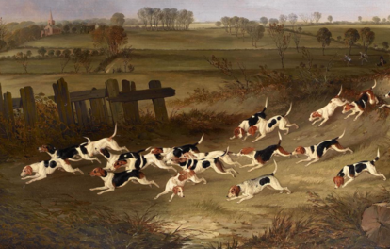
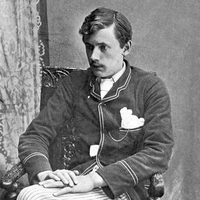
Ernest Christopher Dowson (2 August 1867– 23 February 1900) was an English poet, novelist, and short-story writer, often associated with the Decadent movement. He was born in Lee, London, in 1867. His great-uncle was Alfred Domett, a poet and politician who became Premier of New Zealand and had allegedly been the subject of Robert Browning’s poem “Waring.” Dowson attended The Queen’s College, Oxford, but left in March 1888 before obtaining a degree.
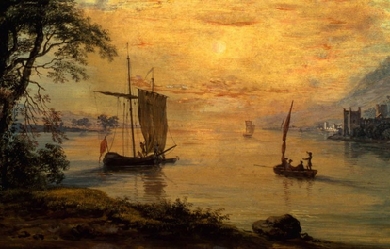

William Henry Davies or W. H. Davies (3 July 1871 – 26 September 1940) was a Welsh poet and writer. Davies spent a significant part of his life as a tramp or hobo, in the United Kingdom and United States, but became one of the most popular poets of his time. The principal themes in his work are observations about life's hardships, the ways in which the human condition is reflected in nature, his own tramping adventures and the various characters he met. Davies is usually considered one of the Georgian Poets, but much of his work is not typical in style or theme of the group. Early Life The son of an iron moulder, Davies was born at 6, Portland Street in the Pillgwenlly district of Newport, Monmouthshire, Wales, a busy port. He had an older brother, Francis Gomer Boase (who was considered "slow") and in 1874 his younger sister Matilda was born. In November 1874, when William was aged three, his father died. The following year his mother Mary Anne Davies remarried and became Mrs Joseph Hill. She agreed that care of the three children should pass to their paternal grandparents, Francis and Lydia Davies, who ran the nearby Church House Inn at 14, Portland Street. His grandfather Francis Boase Davies, originally from Cornwall, had been a sea captain. Davies was related to the famous British actor Sir Henry Irving (referred to as cousin Brodribb by the family); he later recalled that his grandmother referred to Irving as " the cousin who brought disgrace on us". Davies' grandmother was described, by a neighbour who remembered her, as wearing ".. pretty little caps, with bebe ribbon, tiny roses and puce trimmings". Writing in his Introduction to the 1943 Collected Poems of W. H. Davies, Osbert Sitwell recalled Davies telling him that, in addition to his grandparents and himself, his home consisted of "an imbecile brother, a sister ... a maidservant, a dog, a cat, a parrot, a dove and a canary bird." Sitwell also recounts that Davies' grandmother, a Baptist by denomination, was "of a more austere and religious turn of mind than her husband." In 1879 the family moved to Raglan Street, then later to Upper Lewis Street, from where William attended Temple School. In 1883 he moved to Alexandra Road School and the following year was arrested, as one of a gang of five schoolmates, and charged with stealing handbags. He was given twelve strokes of the birch. In 1885 Davies wrote his first poem entitled "Death". In his Poet's Pilgrimage (1918) Davies recounts the time when, at the age of 14, he was left with orders to sit with his dying grandfather. He missed the final moments of his grandfather's death as he was too engrossed in reading "a very interesting book of wild adventure". Delinquent to Supertramp Having finished school under the cloud of his theft he worked first for an ironmonger. In November 1886, his grandmother signed the papers for Davies to begin a five-year apprenticeship to a local picture-frame maker. Davies never enjoyed the craft, however, and never settled into any regular work. He was a difficult and somewhat delinquent young man, and made repeated requests to his grandmother to lend him the money to sail to America. When these were all refused, he eventually left Newport, took casual work and started to travel. The Autobiography of a Super-Tramp, published in 1908, covers his life in the USA between 1893 and 1899, including many adventures and characters from his travels as a drifter. During this period he crossed the Atlantic at least seven times, working on cattle ships. He travelled through many of the states, sometimes begging, sometimes taking seasonal work, but often ending up spending any savings on a drinking spree with a fellow traveller. He took advantage of the corrupt system of "boodle", in order to pass the winter in Michigan, by agreeing to be locked up in a series of different jails. Here, with his fellow tramps, Davies would enjoy the relative comfort of "card-playing, singing, smoking, reading, relating experiences and occasionally taking exercise or going out for a walk." At one stage, on his way to Memphis, Tennessee, he lay alone in a swamp for three days and nights suffering from malaria. The turning point in Davies' life came when, after a week of rambling in London, he spotted a newspaper story about the riches to be made in the Klondike and immediately set off to make his fortune in Canada. Attempting to jump a freight train at Renfrew, Ontario, on 20 March 1899, with fellow tramp Three-fingered Jack, he lost his footing and his right foot was crushed under the wheels of the train. The leg later had to be amputated below the knee and he wore a wooden leg thereafter. Davies' biographers have agreed that the significance of the accident should not be underestimated, even though Davies himself played down the story. Moult begins his biography with the incident and Stonesifer has suggested that this event, more than any other, led Davies to become a professional poet. Davies himself wrote of the accident: "I bore this accident with an outward fortitude that was far from the true state of my feelings. Thinking of my present helplessness caused me many a bitter moment, but I managed to impress all comers with a false indifference… I was soon home again, having been away less than four months; but all the wildness had been taken out of me, and my adventures after this were not of my own seeking, but the result of circumstances." Davies' view of his own disability was ambivalent. In his poem "The Fog", published in the 1913 Foliage, a blind man leads the poet through the fog, showing the reader that one who is handicapped in one domain may well have a considerable advantage in another. Poet He returned to Britain, living a rough life, particularly in London shelters and doss-houses, including the Salvation Army hostel in Southwark known as "The Ark" which he grew to despise. Fearing the contempt of his fellow tramps, he would often feign slumber in the corner of his doss-house, mentally composing his poems and only later committing them to paper in private. At one stage he borrowed money to have his poems printed on loose sheets of paper, which he then tried to sell door-to-door through the streets of residential London. When this enterprise failed, he returned to his lodgings and, in a fit of rage, burned all of the printed sheets in the fire. Davies self-published his first book of poetry, The Soul's Destroyer, in 1905, again by means of his own savings. It proved to be the beginning of success and a growing reputation. In order to even get the slim volume published, Davies had to forgo his allowance and live the life of a tramp for six months (with the first draft of the book hidden in his pocket), just to secure a loan of funds from his inheritance. When eventually published, the volume was largely ignored and he resorted to posting individual copies by hand to prospective wealthy customers chosen from the pages of Who's Who, asking them to send the price of the book, a half crown, in return. He eventually managed to sell 60 of the 200 copies printed. One of the copies was sent to Arthur Adcock, then a journalist with the Daily Mail. On reading the book, as he later wrote in his essay "Gods Of Modern Grub Street", Adcock said that he "recognised that there were crudities and even doggerel in it, there was also in it some of the freshest and most magical poetry to be found in modern books". He sent the price of the book and asked Davies to meet him. Adcock is still generally regarded as "the man who discovered Davies". The first trade edition of The Soul's Destroyer was published by Alston Rivers in 1907. A second edition followed in 1908 and a third in 1910. A 1906 edition, by Fifield, was advertised but has not been verified. Rural life in Kent On 12 October 1905 Davies met Edward Thomas, then literary critic for the Daily Chronicle in London, who was to do more to help him than anyone else. Thomas rented for Davies the tiny two-roomed "Stidulph's Cottage", in Egg Pie Lane, not far from his own home at Elses Farm near Sevenoaks in Kent. Davies moved to the cottage, from 6 Llanwern Street, Newport, via London, in the second week of February 1907. The cottage was "only two meadows off" from Thomas' own house. Thomas adopted the role of protective guardian for Davies, on one occasion even arranging for the manufacture, by a local wheelwright, of a makeshift replacement wooden leg, which was invoiced to Davies as "a novelty cricket bat". In 1907, the manuscript of The Autobiography of a Super-Tramp drew the attention of George Bernard Shaw, who agreed to write a preface (largely through the concerted efforts of his wife Charlotte). It was only because of Shaw that Davies' contract with the publishers was rewritten to allow the author to retain the serial rights, all rights after three years, royalties of fifteen per cent of selling price and a non-returnable advance of twenty five pounds. Davies was also to be given a say on the style of all illustrations, advertisement layouts and cover designs. The original publisher, Duckworth and Sons, refused to accept these demands and so the book was placed instead with London publisher Fifield. A number of anecdotes of Davies' time with the Thomas family in Kent are recounted in the brief account later published by Thomas' widow Helen. In 1911, Davies was awarded a Civil List Pension of £50, later increased to £100 and then again to £150. Davies started to spend more time in London and made many literary friends and acquaintances. Though averse to giving autographs himself, Davies began to make a collection of his own and was particularly keen to obtain that of D. H. Lawrence. Georgian poetry publisher Edward Marsh was able to secure an autograph and also invited Lawrence and wife-to-be Frieda to meet Davies on 28 July 1913. Lawrence was immediately captivated by Davies and later invited him to join them in Germany. Despite his early enthusiasm for Davies' work, however, Lawrence's opinion changed after reading Foliage and he commented after reading Nature Poems in Italy that the verses seemed "so thin, one can hardly feel them". By this time Davies had amassed a library of about fifty books in his cottage, mostly of 16th- and 17th-century poets, and including Shakespeare, Milton, Wordsworth, Byron, Burns, Shelley, Keats, Coleridge, Blake and Herrick. In December 1908 his essay "How It Feels To Be Out of Work", described by Stonesifer as "a rather pedestrian performance", appeared in the pages of The English Review. He continued to send other periodical articles out to editors, but without any success. Society life in London After lodging at a number of temporary addresses in Sevenoaks, Davies moved back to London early in 1914, settling eventually at 14 Great Russell Street in the Bloomsbury district, previously the residence of Charles Dickens. Here in a tiny two-room apartment, initially infested with mice and rats, and next door to rooms occupied by a noisy Belgian prostitute, he lived from early 1916 until 1921. It was during this time in London that Davies embarked on a series of public readings of his work, alongside such others as Hilaire Belloc and W. B. Yeats, impressing such fellow poets as Ezra Pound. He soon found that he was able to socialise with leading society figures of the day, including Lord Balfour and Lady Randolph Churchill. While in London Davies also became friendly with a number of artists, including Jacob Epstein, Harold and Laura Knight, Nina Hamnett, Augustus John, Harold Gilman, William Rothenstein, Walter Sickert, Sir William Nicholson and Osbert and Edith Sitwell. He enjoyed the society of literary men and their conversation, particularly in the rarefied atmosphere downstairs at the Café Royal. He would also meet regularly with W. H. Hudson, Edward Garrett and others at The Mont Blanc in Soho. In his poetry Davies drew extensively for material on his experiences with the seamier side of life, but also on his love of nature. By the time of his prominent place in the Edward Marsh Georgian Poetry series, he was an established figure. He is generally best known for the opening two lines of the poem "Leisure", first published in Songs Of Joy and Others in 1911: "What is this life if, full of care / We have no time to stand and stare..." In October 1917 his work was included in the anthology Welsh Poets: A Representative English selection from Contemporary Writers collated by A. G. Prys-Jones and published by Erskine Macdonald of London. In the last months of 1921, Davies moved to more comfortable quarters at 13 Avery Row, Brook Street, where he rented rooms from the Quaker poet Olaf Baker. He began to find prolonged work difficult, however, suffering from increased bouts of rheumatism and other ailments. Harlow (1993) lists a total of 14 BBC broadcasts of Davies reading his own work made between 1924 and 1940 (now held in the BBC broadcast archive) although none included his most famous work, "Leisure". Later Days, the 1925 sequel to The Autobiography of a Super-Tramp, describes the beginnings of Davies' career as a writer and his acquaintance with Belloc, Shaw and de la Mare, amongst many others. He became "the most painted literary man of his day", drawn and painted by Augustus John, Sir William Nicholson, Dame Laura Knight and Sir William Rothenstein. His head in bronze was the most successful of Epstein's smaller works. Honours, memorials and legacy In 1926 Davies was honoured with the degree of Doctor Litteris, honoris causa from the University of Wales. Davies returned to his native Newport in 1930, where a luncheon was held in his honour at the Westgate Hotel. His return, in September 1938, for the unveiling of the plaque in his honour, proved to be his last public appearance. A large collection of Davies manuscripts, including a copy of "Leisure", dated 8 May 1914, is held by the National Library of Wales. The collection includes a copy of "A Boy's Sorrow", an apparently unpublished poem of two eight-line stanzas relating to the death of a neighbour. Also included is a volume (c. 1916) containing autograph fair copies of 15 Davies poems, some of them apparently unpublished, submitted to James Guthrie (1874–1952) for publication by the Pear Tree Press as a collection entitled Quiet Streams, to which annotations have been added by Lord Kenyon. British writer Gerald Brenan (1894–1987) and his generation were influenced by Davies' Autobiography of a Super-Tramp. In 1951 Jonathan Cape published The Essential W. H. Davies, selected and with an introduction by Brian Waters, a young Gloucestershire poet and writer whose work Davies admired, who described him as "about the last of England's professional poets". The collection included The Autobiography of a Super-tramp, and extracts from Beggars, A Poet's Pilgrimage, Later Days, My Birds and My Garden, as well as over 100 poems arranged by publication period. Many of Davies' poems have been given a musical setting. "Money, O!" was set to music for piano, in G minor, by Michael Head - his 1929 Boosey & Hawkes collection also included settings for "The Likeness", "The Temper of a Maid", "Natures' Friend", "Robin Redbreast" and "A Great Time". There are also three songs by Sir Arthur Bliss - "Thunderstorms", "This Night", and "Leisure" - as well as "The Rain" for voice and piano, by Margaret Campbell Bruce, published in 1951 by J. Curwen and Sons. Experimental Irish folk group Dr Strangely Strange also sang and quoted from "Leisure" on their 1970 album Heavy Petting, with harmonium accompaniment. A musical adaptation of the same poem, with John Karvelas (vocals) and Nick Pitloglou (piano) and an animated film by Pipaluk Polanksi, may be found on YouTube. Also in 1970, Fleetwood Mac recorded "Dragonfly", a song with lyrics taken from Davies' 1927 poem, "The Dragonfly". The song was also recorded by English singer-songwriter and multi-instrumentalist Blake, for his 2011 album The First Snow. On 1 July 1971 a special First Day Cover, with a matching commemorative post-mark was issued by the UK Post Office to mark Davies' centenary. A controversial statue by Paul Bothwell-Kincaid, inspired by the poem "Leisure", was unveiled in Commercial Street, Newport in December 1990, to commemorate Davies' work, on the 50th anniversary of his death. The bronze head of Davies by Epstein, from January 1917, regarded by many as the most accurate artistic impression of Davies and a copy of which Davies owned himself, may be found at Newport Museum and Art Gallery (donated by Viscount Tredegar). In August 2010 the play Supertramp, Sickert and Jack the Ripper by Lewis Davies, concerning an imagined sitting by Davies for a portrait by Walter Sickert, premiered at the Edinburgh Festival. References Wikipedia—https://en.wikipedia.org/wiki/W._H._Davies
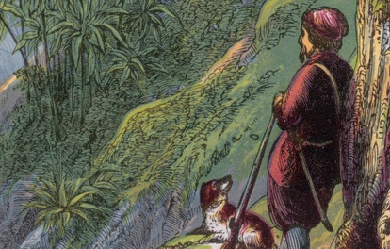
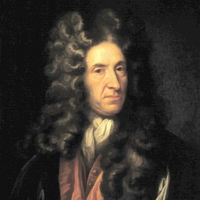
Daniel Defoe (c. 1660 – 24 April 1731), born Daniel Foe, was an English trader, writer, journalist, pamphleteer and spy. He is most famous for his novel Robinson Crusoe, which is second only to the Bible in its number of translations. He has been seen as one of the earliest proponents of the English novel, and helped to popularise the form in Britain with others such as Aphra Behn and Samuel Richardson. Defoe wrote many political tracts and often was in trouble with the authorities, including a spell in prison. Intellectuals and political leaders paid attention to his fresh ideas and sometimes consulted with him. Defoe was a prolific and versatile writer, producing more than three hundred works—books, pamphlets, and journals—on diverse topics, including politics, crime, religion, marriage, psychology, and the supernatural. He was also a pioneer of business journalism and economic journalism. Early life Daniel Foe (his original name) was probably born in Fore Street in the parish of St Giles Cripplegate, London. Defoe later added the aristocratic-sounding “De” to his name, and on occasion claimed descent from the family of De Beau Faux. His birthdate and birthplace are uncertain, and sources offer dates from 1659 to 1662, with the summer or early autumn of 1660 considered the most likely. His father, James Foe, was a prosperous tallow chandler and a member of the Worshipful Company of Butchers. In Defoe’s early life, he experienced some of the most unusual occurrences in English history: in 1665, 70,000 were killed by the Great Plague of London, and the next year, the Great Fire of London left standing only Defoe’s and two other houses in his neighbourhood. In 1667, when he was probably about seven, a Dutch fleet sailed up the Medway via the River Thames and attacked the town of Chatham in the raid on the Medway. His mother, Annie, had died by the time he was about ten. Education Defoe was educated at the Rev. James Fisher’s boarding school in Pixham Lane in Dorking, Surrey. His parents were Presbyterian dissenters, and around the age of 14, he attended a dissenting academy at Newington Green in London run by Charles Morton, and he is believed to have attended the Newington Green Unitarian Church and kept practising his Presbyterian religion. During this period, the English government persecuted those who chose to worship outside the Church of England. Business career Defoe entered the world of business as a general merchant, dealing at different times in hosiery, general woollen goods, and wine. His ambitions were great and he was able to buy a country estate and a ship (as well as civets to make perfume), though he was rarely out of debt. He was forced to declare bankruptcy in 1692. On 1 January 1684, Defoe married Mary Tuffley at St Botolph’s Aldgate. She was the daughter of a London merchant, receiving a dowry of £3,700—a huge amount by the standards of the day. With his debts and political difficulties, the marriage may have been troubled, but it lasted 47 years and produced eight children.In 1685, Defoe joined the ill-fated Monmouth Rebellion but gained a pardon, by which he escaped the Bloody Assizes of Judge George Jeffreys. Queen Mary and her husband William III were jointly crowned in 1689, and Defoe became one of William’s close allies and a secret agent. Some of the new policies led to conflict with France, thus damaging prosperous trade relationships for Defoe, who had established himself as a merchant. In 1692, Defoe was arrested for debts of £700, though his total debts may have amounted to £17,000. His laments were loud and he always defended unfortunate debtors, but there is evidence that his financial dealings were not always honest. He died with little wealth and evidence of lawsuits with the royal treasury.Following his release, he probably travelled in Europe and Scotland, and it may have been at this time that he traded wine to Cadiz, Porto and Lisbon. By 1695, he was back in England, now formally using the name “Defoe” and serving as a “commissioner of the glass duty”, responsible for collecting taxes on bottles. In 1696, he ran a tile and brick factory in what is now Tilbury in Essex and lived in the parish of Chadwell St Mary. Writing As many as 545 titles have been ascribed to Defoe, ranging from satirical poems, political and religious pamphlets, and volumes. (Furbank and Owens argue for the much smaller number of 276 published items in Critical Bibliography (1998).) Pamphleteering and prison Defoe’s first notable publication was An essay upon projects, a series of proposals for social and economic improvement, published in 1697. From 1697 to 1698, he defended the right of King William III to a standing army during disarmament, after the Treaty of Ryswick (1697) had ended the Nine Years’ War (1688–1697). His most successful poem, The True-Born Englishman (1701), defended the king against the perceived xenophobia of his enemies, satirising the English claim to racial purity. In 1701, Defoe presented the Legion’s Memorial to Robert Harley, then Speaker of the House of Commons—and his subsequent employer—while flanked by a guard of sixteen gentlemen of quality. It demanded the release of the Kentish petitioners, who had asked Parliament to support the king in an imminent war against France. The death of William III in 1702 once again created a political upheaval, as the king was replaced by Queen Anne who immediately began her offensive against Nonconformists. Defoe was a natural target, and his pamphleteering and political activities resulted in his arrest and placement in a pillory on 31 July 1703, principally on account of his December 1702 pamphlet entitled The Shortest-Way with the Dissenters; Or, Proposals for the Establishment of the Church, purporting to argue for their extermination. In it, he ruthlessly satirised both the High church Tories and those Dissenters who hypocritically practised so-called “occasional conformity”, such as his Stoke Newington neighbour Sir Thomas Abney. It was published anonymously, but the true authorship was quickly discovered and Defoe was arrested. He was charged with seditious libel. Defoe was found guilty after a trial at the Old Bailey in front of the notoriously sadistic judge Salathiel Lovell. Lovell sentenced him to a punitive fine of 200 marks, to public humiliation in a pillory, and to an indeterminate length of imprisonment which would only end upon the discharge of the punitive fine. According to legend, the publication of his poem Hymn to the Pillory caused his audience at the pillory to throw flowers instead of the customary harmful and noxious objects and to drink to his health. The truth of this story is questioned by most scholars, although John Robert Moore later said that “no man in England but Defoe ever stood in the pillory and later rose to eminence among his fellow men”. After his three days in the pillory, Defoe went into Newgate Prison. Robert Harley, 1st Earl of Oxford and Earl Mortimer, brokered his release in exchange for Defoe’s co-operation as an intelligence agent for the Tories. In exchange for such co-operation with the rival political side, Harley paid some of Defoe’s outstanding debts, improving his financial situation considerably.Within a week of his release from prison, Defoe witnessed the Great Storm of 1703, which raged through the night of 26/27 November. It caused severe damage to London and Bristol, uprooted millions of trees, and killed more than 8,000 people, mostly at sea. The event became the subject of Defoe’s The Storm (1704), which includes a collection of witness accounts of the tempest. Many regard it as one of the world’s first examples of modern journalism.In the same year, he set up his periodical A Review of the Affairs of France which supported the Harley Ministry, chronicling the events of the War of the Spanish Succession (1702–1714). The Review ran three times a week without interruption until 1713. Defoe was amazed that a man as gifted as Harley left vital state papers lying in the open, and warned that he was almost inviting an unscrupulous clerk to commit treason; his warnings were fully justified by the William Gregg affair. When Harley was ousted from the ministry in 1708, Defoe continued writing the Review to support Godolphin, then again to support Harley and the Tories in the Tory ministry of 1710–1714. The Tories fell from power with the death of Queen Anne, but Defoe continued doing intelligence work for the Whig government, writing “Tory” pamphlets that undermined the Tory point of view.Not all of Defoe’s pamphlet writing was political. One pamphlet was originally published anonymously, entitled "A True Relation of the Apparition of One Mrs. Veal the Next Day after her Death to One Mrs. Bargrave at Canterbury the 8th of September, 1705." It deals with interaction between the spiritual realm and the physical realm and was most likely written in support of Charles Drelincourt’s The Christian Defense against the Fears of Death (1651). It describes Mrs. Bargrave’s encounter with her old friend Mrs. Veal after she had died. It is clear from this piece and other writings that the political portion of Defoe’s life was by no means his only focus. Anglo-Scottish Union of 1707 In despair during his imprisonment for the seditious libel case, Defoe wrote to William Paterson, the London Scot and founder of the Bank of England and part instigator of the Darien scheme, who was in the confidence of Robert Harley, 1st Earl of Oxford and Earl Mortimer, leading minister and spymaster in the English Government. Harley accepted Defoe’s services and released him in 1703. He immediately published The Review, which appeared weekly, then three times a week, written mostly by himself. This was the main mouthpiece of the English Government promoting the Act of Union 1707.In 1709, Defoe authored a rather lengthy book entitled The History of the Union of Great Britain, an Edinburgh publication printed by the Heirs of Anderson. The book was not published anonymously and cites Defoe twice as being its author. The book attempts to explain the facts leading up to the Act of Union 1707, dating all the way back to 6 December 1604 when King James I was presented with a proposal for unification. This so-called “first draft” for unification took place 100 years before the signing of the 1707 accord, which respectively preceded the commencement of Robinson Crusoe by another ten years. Defoe began his campaign in The Review and other pamphlets aimed at English opinion, claiming that it would end the threat from the north, gaining for the Treasury an “inexhaustible treasury of men”, a valuable new market increasing the power of England. By September 1706, Harley ordered Defoe to Edinburgh as a secret agent to do everything possible to help secure acquiescence in the Treaty of Union. He was conscious of the risk to himself. Thanks to books such as The Letters of Daniel Defoe (edited by G. H. Healey, Oxford 1955), far more is known about his activities than is usual with such agents. His first reports included vivid descriptions of violent demonstrations against the Union. “A Scots rabble is the worst of its kind”, he reported. Years later John Clerk of Penicuik, a leading Unionist, wrote in his memoirs that it was not known at the time that Defoe had been sent by Godolphin: … to give a faithful account to him from time to time how everything past here. He was therefor a spy among us, but not known to be such, otherways the Mob of Edin. had pull him to pieces. Defoe was a Presbyterian who had suffered in England for his convictions, and as such he was accepted as an adviser to the General Assembly of the Church of Scotland and committees of the Parliament of Scotland. He told Harley that he was “privy to all their folly” but “Perfectly unsuspected as with corresponding with anybody in England”. He was then able to influence the proposals that were put to Parliament and reported, Having had the honour to be always sent for the committee to whom these amendments were referrèd, I have had the good fortune to break their measures in two particulars via the bounty on Corn andproportion of the Excise. For Scotland, he used different arguments, even the opposite of those which he used in England, usually ignoring the English doctrine of the Sovereignty of Parliament, for example, telling the Scots that they could have complete confidence in the guarantees in the Treaty. Some of his pamphlets were purported to be written by Scots, misleading even reputable historians into quoting them as evidence of Scottish opinion of the time. The same is true of a massive history of the Union which Defoe published in 1709 and which some historians still treat as a valuable contemporary source for their own works. Defoe took pains to give his history an air of objectivity by giving some space to arguments against the Union but always having the last word for himself. He disposed of the main Union opponent, Andrew Fletcher of Saltoun, by ignoring him. Nor does he account for the deviousness of the Duke of Hamilton, the official leader of the various factions opposed to the Union, who seemingly betrayed his former colleagues when he switched to the Unionist/Government side in the decisive final stages of the debate. Defoe made no attempt to explain why the same Parliament of Scotland which was so vehement for its independence from 1703 to 1705 became so supine in 1706. He received very little reward from his paymasters and of course no recognition for his services by the government. He made use of his Scottish experience to write his Tour thro’ the whole Island of Great Britain, published in 1726, where he admitted that the increase of trade and population in Scotland which he had predicted as a consequence of the Union was “not the case, but rather the contrary”. Defoe’s description of Glasgow (Glaschu) as a “Dear Green Place” has often been misquoted as a Gaelic translation for the town’s name. The Gaelic Glas could mean grey or green, while chu means dog or hollow. Glaschu probably means “Green Hollow”. The “Dear Green Place”, like much of Scotland, was a hotbed of unrest against the Union. The local Tron minister urged his congregation “to up and anent for the City of God”. The “Dear Green Place” and “City of God” required government troops to put down the rioters tearing up copies of the Treaty at almost every mercat cross in Scotland. When Defoe visited in the mid-1720s, he claimed that the hostility towards his party was “because they were English and because of the Union, which they were almost universally exclaimed against”. Late writing The extent and particulars are widely contested concerning Defoe’s writing in the period from the Tory fall in 1714 to the publication of Robinson Crusoe in 1719. Defoe comments on the tendency to attribute tracts of uncertain authorship to him in his apologia Appeal to Honour and Justice (1715), a defence of his part in Harley’s Tory ministry (1710–1174). Other works that anticipate his novelistic career include The Family Instructor (1715), a conduct manual on religious duty; Minutes of the Negotiations of Monsr. Mesnager (1717), in which he impersonates Nicolas Mesnager, the French plenipotentiary who negotiated the Treaty of Utrecht (1713); and A Continuation of the Letters Writ by a Turkish Spy (1718), a satire of European politics and religion, ostensibly written by a Muslim in Paris. From 1719 to 1724, Defoe published the novels for which he is famous (see below). In the final decade of his life, he also wrote conduct manuals, including Religious Courtship (1722), The Complete English Tradesman (1726) and The New Family Instructor (1727). He published a number of books decrying the breakdown of the social order, such as The Great Law of Subordination Considered (1724) and Everybody’s Business is Nobody’s Business (1725) and works on the supernatural, like The Political History of the Devil (1726), A System of Magick (1727) and An Essay on the History and Reality of Apparitions (1727). His works on foreign travel and trade include A General History of Discoveries and Improvements (1727) and Atlas Maritimus and Commercialis (1728). Perhaps his greatest achievement with the novels is the magisterial A tour thro’ the whole island of Great Britain (1724–1727), which provided a panoramic survey of British trade on the eve of the Industrial Revolution. The Complete English Tradesman Published in 1726, The Complete English Tradesman is an example of Defoe’s political works. He discusses the role of the tradesman in England in comparison to tradesmen internationally, arguing that the British system of trade is far superior. He also implies that trade is the backbone of the British economy: “estate’s a pond, but trade’s a spring.” He praises the practicality of trade not only within the economy but the social stratification as well. Most of the British gentry, he argues is at one time or another inextricably linked with the institution of trade, either through personal experience, marriage or genealogy. Oftentimes younger members of noble families entered into trade. Marriage to a tradesman’s daughter by a nobleman was also common. Overall Defoe demonstrated a high respect for tradesmen, being one himself. Not only does Defoe elevate individual British tradesmen to the level of gentleman, but he praises the entirety of British trade as a superior system. Trade, Defoe argues is a much better catalyst for social and economic change than war. He states that through imperialism and trade expansion the British empire is able to “increase commerce at home” through job creation and increased consumption. He states that increased consumption, by laws of supply and demand, increases production and in turn raises wages for the poor therefore lifting part of British society further out of poverty. Novels Robinson Crusoe Published in his late fifties, this novel relates the story of a man’s shipwreck on a desert island for twenty-eight years and his subsequent adventures. Throughout its episodic narrative, Crusoe’s struggles with faith are apparent as he bargains with God in times of life-threatening crises, but time and again he turns his back after his deliverances. He is finally content with his lot in life, separated from society, following a more genuine conversion experience. Usually read as fiction, a coincidence of background geography suggests that this may be non-fiction. In the opening pages of The Farther Adventures of Robinson Crusoe, the author describes how Crusoe settled in Bedford, married and produced a family, and that when his wife died, he went off on these further adventures. Bedford is also the place where the brother of “H. F.” in A Journal of the Plague Year retired to avoid the danger of the plague, so that by implication, if these works were not fiction, Defoe’s family met Crusoe in Bedford, from whence the information in these books was gathered. Defoe went to school in Stoke Newington, London, with a friend named Caruso. The novel has been assumed to be based in part on the story of the Scottish castaway Alexander Selkirk, who spent four years stranded in the Juan Fernández Islands, but this experience is inconsistent with the details of the narrative. The island Selkirk lived on was named Más a Tierra (Closer to Land) at the time and was renamed Robinson Crusoe Island in 1966. It has been supposed that Defoe may have also been inspired by the Latin or English translation of a book by the Andalusian-Arab Muslim polymath Ibn Tufail, who was known as “Abubacer” in Europe. The Latin edition of the book was entitled Philosophus Autodidactus and it was an earlier novel that is also set on a deserted island. Captain Singleton Defoe’s next novel was Captain Singleton (1720), an adventure story whose first half covers a traversal of Africa and whose second half taps into the contemporary fascination with piracy. It has been commended for its sensitive depiction of the close relationship between the hero and his religious mentor, Quaker William Walters. Memoirs of a Cavalier Memoirs of a Cavalier (1720) is set during the Thirty Years’ War and the English Civil War. A Journal of the Plague Year A novel often read as non-fiction, this is an account of the Great Plague of London in 1665. It is undersigned by the initials “H. F.”, suggesting the author’s uncle Henry Foe as its primary source. It is an historical account of the events based on extensive research, published in 1722. Bring out your dead! The ceaseless chant of doom echoed through a city of emptied streets and filled grave pits. For this was London in the year of 1665, the Year of the Great Plague … In 1721, when the Black Death again threatened the European Continent, Daniel Defoe wrote “A Journal of the Plague Year” to alert an indifferent populace to the horror that was almost upon them. Through the eyes of a saddler who had chosen to remain while multitudes fled, the master realist vividly depicted a plague-stricken city. He re-enacted the terror of a helpless people caught in a tragedy they could not comprehend: the weak preying on the dying, the strong administering to the sick, the sinful orgies of the cynical, the quiet faith of the pious. With dramatic insight he captured for all time the death throes of a great city.—Back cover of the New American Library version of “A Journal of the Plague Year”; Signet Classic, 1960 Colonel Jack Colonel Jack (1722) follows an orphaned boy from a life of poverty and crime to colonial prosperity, military and marital imbroglios, and religious conversion, driven by a problematic notion of becoming a “gentleman.” Moll Flanders Also in 1722, Defoe wrote Moll Flanders, another first-person picaresque novel of the fall and eventual redemption, both material and spiritual, of a lone woman in 17th-century England. The titular heroine appears as a whore, bigamist, and thief, lives in The Mint, commits adultery and incest, and yet manages to retain the reader’s sympathy. Her savvy manipulation of both men and wealth earns her a life of trials but ultimately an ending in reward. Although Moll struggles with the morality of some of her actions and decisions, religion seems to be far from her concerns throughout most of her story. However, like Robinson Crusoe, she finally repents. Moll Flanders is an important work in the development of the novel, as it challenged the common perception of femininity and gender roles in 18th-century British society, and it has come to be widely regarded as an example of erotica. Roxana Moll Flanders and Defoe’s final novel, Roxana: The Fortunate Mistress (1724), are examples of the remarkable way in which Defoe seems to inhabit his fictional characters (yet “drawn from life”), not least in that they are women. Roxana narrates the moral and spiritual decline of a high society courtesan. Roxana differs from other Defoe works because the main character does not exhibit a conversion experience, even though she claims to be a penitent later in her life, at the time that she’s relaying her story. Death Daniel Defoe died on 24 April 1731, probably while in hiding from his creditors. He often was in debtors’ prison. The cause of his death was labelled as lethargy, but he probably experienced a stroke. He was interred in Bunhill Fields (today Bunhill Fields Burial and Gardens), Borough of Islington, London, where a monument was erected to his memory in 1870.Defoe is known to have used at least 198 pen names. Selected works Novels * The Consolidator, or Memoirs of Sundry Transactions from the World in the Moon: Translated from the Lunar Language (1705) * Robinson Crusoe (1719) – originally published in two volumes:The Life and Strange Surprizing Adventures of Robinson Crusoe, of York, Mariner: Who Lived Eight and Twenty Years [...] * The Farther Adventures of Robinson Crusoe: Being the Second and Last Part of His Life [...] * Serious Reflections During the Life and Surprising Adventures of Robinson Crusoe: With his Vision of the Angelick World (1720) * Captain Singleton (1720) * Memoirs of a Cavalier (1720) * A Journal of the Plague Year (1722) * Colonel Jack (1722) * Moll Flanders (1722) * Roxana: The Fortunate Mistress (1724) Non-fiction * An Essay Upon Projects (1697) – which includes a chapter suggesting a national insurance scheme. * The Storm (1704) – describes the worst storm ever to hit Britain in recorded times. Includes eyewitness accounts. * Atlantis Major (1711) * The Family Instructor (1715) * Memoirs of the Church of Scotland (1717) * The History of the Remarkable Life of John Sheppard (1724) – describing Sheppard’s life of crime and concluding with the miraculous escapes from prison for which he had become a public sensation. * A Narrative of All The Robberies, Escapes, &c. of John Sheppard (1724) – written by or taken from Sheppard himself in the condemned cell before he was hanged for theft, apparently by way of conclusion to the Defoe work. * A tour thro’ the whole island of Great Britain, divided into circuits or journies (1724–1727) * The Political History of the Devil (1726) * The Complete English Tradesman (1726) * A treatise concerning the use and abuse of the marriage bed... (1727) * A Plan of the English Commerce (1728) Pamphlets or essays in prose * The Poor Man’s Plea (1698) * The History of the Kentish Petition (1701) * The Shortest Way with the Dissenters (1702) * The Great Law of Subordination Consider’d (1704) * Giving Alms No Charity, and Employing the Poor (1704) * An Appeal to Honour and Justice, Tho’ it be of his Worst Enemies, by Daniel Defoe, Being a True Account of His Conduct in Publick Affairs (1715) * A Vindication of the Press: Or, An Essay on the Usefulness of Writing, on Criticism, and the Qualification of Authors (1718) * Every-body’s Business, Is No-body’s Business (1725) * The Protestant Monastery (1726) * Parochial Tyranny (1727) * Augusta Triumphans (1728) * Second Thoughts are Best (1729) * An Essay Upon Literature (1726) * Mere Nature Delineated (1726) * Conjugal Lewdness (1727) Pamphlets or essays in verse * The True-Born Englishman: A Satyr (1701) * Hymn to the Pillory (1703) * An Essay on the Late Storm (1704) Some contested works attributed to Defoe * A Friendly Epistle by way of reproof from one of the people called Quakers, to T. B., a dealer in many words (1715). * The King of Pirates (1719) – purporting to be an account of the pirate Henry Avery. * The Pirate Gow (1725) – an account of John Gow. * A General History of the Pyrates (1724, 1725, 1726, 1828) – published in two volumes by Charles Rivington, who had a shop near St. Paul’s Cathedral, London. Published under the name of Captain Charles Johnson, it sold in many editions. * Captain Carleton’s Memoirs of an English Officer (1728). * The life and adventures of Mrs. Christian Davies, commonly call’d Mother Ross (1740) – published anonymously; printed and sold by R. Montagu in London; and attributed to Defoe but more recently not accepted. References Wikipedia—https://en.wikipedia.org/wiki/Daniel_Defoe

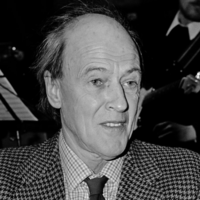
Roald Dahl (/ˈroʊ.ɑːl ˈdɑːl/; Norwegian pronunciation: [ˈɾuːɑl dɑl]; 13 September 1916– 23 November 1990) was a British novelist, short story writer, poet, screenwriter, and fighter pilot. His books have sold over 200 million copies worldwide. Born in Wales to Norwegian parents, Dahl served in the Royal Air Force during the Second World War, in which he became a flying ace and intelligence officer, rising to the rank of acting wing commander. He rose to prominence in the 1940s with works for both children and adults and he became one of the world’s best-selling authors. He has been referred to as "one of the greatest storytellers for children of the 20th century". His awards for contribution to literature include the 1983 World Fantasy Award for Life Achievement, and the British Book Awards’ Children’s Author of the Year in 1990. In 2008, The Times placed Dahl 16th on its list of "The 50 greatest British writers since 1945". Dahl’s short stories are known for their unexpected endings and his children’s books for their unsentimental, macabre, often darkly comic content, featuring villainous adult enemies of the child characters. His books champion the kind-hearted, and feature an underlying warm sentiment. Dahl’s works for children include James and the Giant Peach, Charlie and the Chocolate Factory, Matilda, The Witches, Fantastic Mr Fox, The BFG, The Twits and George’s Marvellous Medicine. His adult works include Tales of the Unexpected. Early life Childhood Roald Dahl was born in 1916 at Villa Marie, Fairwater Road, in Llandaff, Cardiff, Wales to Norwegian parents, Harald Dahl and Sofie Magdalene Dahl (née Hesselberg). Dahl’s father had emigrated to the UK from Sarpsborg, Norway, and settled in Cardiff in the 1880s. His mother came over and married his father in 1911. Dahl was named after the Norwegian polar explorer Roald Amundsen. His first language was Norwegian, which he spoke at home with his parents and his sisters Astri, Alfhild and Else. Dahl and his sisters were raised in the Lutheran faith, and were baptised at the Norwegian Church, Cardiff, where their parents worshipped. In 1920, when Dahl was three years old, his seven-year-old sister, Astri, died from appendicitis. Weeks later, his father died of pneumonia at the age of 57. With the option of returning to Norway to live with relatives, Dahl’s mother decided to remain in Wales, because Harald had wished to have their children educated in British schools, which he considered the world’s best. Dahl first attended the Cathedral School, Llandaff. At the age of eight, he and four of his friends (one named Thwaites) were caned by the headmaster after putting a dead mouse in a jar of gobstoppers at the local sweet shop, which was owned by a “mean and loathsome” old woman called Mrs Pratchett. This was known among the five boys as the "Great Mouse Plot of 1924". A favourite sweet among British schoolboys between the two World Wars, Dahl would later refer to gobstoppers in his literary creation, Everlasting Gobstopper. Thereafter, he transferred to a boarding school in England: St Peter’s in Weston-super-Mare. Roald’s parents had wanted him to be educated at an English public school and, because of a then regular ferry link across the Bristol Channel, this proved to be the nearest. His time at St Peter’s was an unpleasant experience for him. He was very homesick and wrote to his mother every week but never revealed to her his unhappiness. Only after her death in 1967 did he find out that she had saved every single one of his letters, in small bundles held together with green tape. Dahl wrote about his time at St Peter’s in his autobiography Boy: Tales of Childhood. Repton School From 1929, he attended Repton School in Derbyshire. Dahl had unhappy experiences of the school, describing an environment of ritual cruelty and fagging for older boys along with terrible beatings; these violent experiences are described in Donald Sturrock’s biography of Dahl. There are echoes of these darker experiences in Dahl’s writings and his hatred of cruelty and corporal punishment. According to Boy: Tales of Childhood, a friend named Michael was viciously caned by headmaster Geoffrey Fisher, who later became the Archbishop of Canterbury and went on to crown Queen Elizabeth II in 1953. (However, according to Dahl’s biographer Jeremy Treglown, the caning took place in May 1933, a year after Fisher had left Repton and the headmaster concerned was in fact J. T. Christie, Fisher’s successor.) This caused Dahl to “have doubts about religion and even about God”. He was never seen as a particularly talented writer in his school years, with one of his English teachers writing in his school report “I have never met anybody who so persistently writes words meaning the exact opposite of what is intended.” Dahl was exceptionally tall, reaching 6 feet 6 inches (1.98 m) in adult life. He excelled at sports, being made captain of the school fives and squash teams, and also playing for the football team. As well as having a passion for literature, he also developed an interest in photography and often carried a camera with him. During his years at Repton, Cadbury, the chocolate company, would occasionally send boxes of new chocolates to the school to be tested by the pupils. Dahl would dream of inventing a new chocolate bar that would win the praise of Mr Cadbury himself; and this proved the inspiration for him to write his third children’s book, Charlie and the Chocolate Factory (1964), and to include references to chocolate in other children’s books. Throughout his childhood and adolescent years, Dahl spent the majority of his summer holidays with his mother’s family in Norway, and wrote about many happy memories from those expeditions in Boy: Tales of Childhood, such as when he replaced the tobacco in his half–sister’s fiancé's pipe with goat droppings. He only experienced one unhappy memory of his holidays in Norway at around the age of eight, when his adenoids were removed by a doctor. His childhood and first job selling kerosene in Midsomer Norton and surrounding villages in Somerset are subjects in Boy: Tales of Childhood. After School After finishing his schooling, in August 1934 Dahl crossed the Atlantic on the RMS Nova Scotia and hiked through Newfoundland with the Public Schools Exploring Society. In July 1934, Dahl joined the Shell Petroleum Company. Following two years of training in the United Kingdom, he was transferred to first Mombasa, Kenya, then to Dar-es-Salaam, Tanganyika (now Tanzania). Along with the only two other Shell employees in the entire territory, he lived in luxury in the Shell House outside Dar es Salaam, with a cook and personal servants. While out on assignments supplying oil to customers across Tanganyika, he encountered black mambas and lions, among other wildlife. Fighter ace In August 1939, as World War II loomed, plans were made to round up the hundreds of Germans in Dar-es-Salaam. Dahl was made a lieutenant in the King’s African Rifles, commanding a platoon of Askaris, indigenous troops serving in the colonial army. In November 1939, Dahl joined the Royal Air Force (RAF) as an aircraftman with service number 774022. After a 600-mile (970 km) car journey from Dar es Salaam to Nairobi, he was accepted for flight training with 16 other men, of whom only three others survived the war. With seven hours and 40 minutes experience in a De Havilland Tiger Moth, he flew solo; Dahl enjoyed watching the wildlife of Kenya during his flights. He continued to advanced flying training in Iraq, at RAF Habbaniya, 50 miles (80 km) west of Baghdad. He was commissioned pilot officer on 24 August 1940. Following six months’ training on Hawker Harts, Dahl was made an acting pilot officer. He was assigned to No. 80 Squadron RAF, flying obsolete Gloster Gladiators, the last biplane fighter aircraft used by the RAF. Dahl was surprised to find that he would not receive any specialised training in aerial combat, or in flying Gladiators. On 19 September 1940, Dahl was ordered to fly his Gladiator from Abu Sueir in Egypt, on to Amiriya to refuel, and again to Fouka in Libya for a second refuelling. From there he would fly to 80 Squadron’s forward airstrip 30 miles (48 km) south of Mersa Matruh. On the final leg, he could not find the airstrip and, running low on fuel and with night approaching, he was forced to attempt a landing in the desert. The undercarriage hit a boulder and the aircraft crashed, fracturing his skull, smashing his nose and temporarily blinding him. He managed to drag himself away from the blazing wreckage and passed out. He wrote about the crash in his first published work. Dahl was rescued and taken to a first-aid post in Mersa Matruh, where he regained consciousness, but not his sight, and was then taken by train to the Royal Navy hospital in Alexandria. There he fell in and out of love with a nurse, Mary Welland. An RAF inquiry into the crash revealed that the location to which he had been told to fly was completely wrong, and he had mistakenly been sent instead to the no man’s land between the Allied and Italian forces. In February 1941, Dahl was discharged from hospital and passed fully fit for flying duties. By this time, 80 Squadron had been transferred to the Greek campaign and based at Eleusina, near Athens. The squadron was now equipped with Hawker Hurricanes. Dahl flew a replacement Hurricane across the Mediterranean Sea in April 1941, after seven hours flying Hurricanes. By this stage in the Greek campaign, the RAF had only 18 combat aircraft in Greece: 14 Hurricanes and four Bristol Blenheim light bombers. Dahl saw his first aerial combat on 15 April 1941, while flying alone over the city of Chalcis. He attacked six Junkers Ju-88s that were bombing ships and shot one down. On 16 April in another air battle, he shot down another Ju-88. On 20 April 1941, Dahl took part in the “Battle of Athens”, alongside the highest-scoring British Commonwealth ace of World War II, Pat Pattle and Dahl’s friend David Coke. Of 12 Hurricanes involved, five were shot down and four of their pilots killed, including Pattle. Greek observers on the ground counted 22 German aircraft downed, but because of the confusion of the aerial engagement, none of the pilots knew which aircraft they had shot down. Dahl described it as “an endless blur of enemy fighters whizzing towards me from every side”. In May, as the Germans were pressing on Athens, Dahl was evacuated to Egypt. His squadron was reassembled in Haifa. From there, Dahl flew sorties every day for a period of four weeks, shooting down a Vichy French Air Force Potez 63 on 8 June and another Ju-88 on 15 June, but he then began to get severe headaches that caused him to black out. He was invalided home to Britain. Though at this time Dahl was only a pilot officer on probation, in September 1941 he was simultaneously confirmed as a pilot officer and promoted to war substantive flying officer. Diplomat, writer and intelligence officer After being invalided home, Dahl was posted to an RAF training camp in Uxbridge while attempting to recover his health enough to become an instructor. In late March 1942, while in London, he met the Under-Secretary of State for Air, Major Harold Balfour (later Lord Balfour), at his club. Impressed by his war record and conversational abilities, Balfour appointed Dahl as assistant air attaché at the British Embassy in Washington, D.C. Initially resistant, he was finally persuaded by Balfour to accept, and took passage on the SS Batori from Glasgow a few days later. He arrived in Halifax on 14 April, after which he took a sleeper train to Montreal. Coming from war-starved Britain, Dahl was amazed by the wealth of food and amenities to be had in North America. Arriving in Washington a week later, Dahl found he liked the atmosphere of the U.S. capital, but was unimpressed by his office in the British Air Mission, attached to the embassy. Nor was he impressed by the ambassador, Lord Halifax, with whom he sometimes played tennis and whom he described as “a courtly English gentleman.” As part of his duties as assistant air attaché, Dahl was to help neutralise the isolationist views many Americans still held by giving pro-British speeches and discussing his war service; the United States had only entered the war the previous December, following the attack on Pearl Harbor. After only ten days in his new posting, Dahl strongly disliked it, feeling he had taken on “a most ungodly unimportant job.” As he later said: I’d just come from the war. People were getting killed. I had been flying around, seeing horrible things. Now, almost instantly, I found myself in the middle of a pre-war cocktail party in America. However, at this time Dahl met the noted novelist C. S. Forester, who was also working to aid the British war effort. The Saturday Evening Post had asked Forester to write a story based on Dahl’s flying experiences; Forester asked Dahl to write down some RAF anecdotes so that he could shape them into a story. After Forester read what Dahl had given him, he decided to publish the story exactly as Dahl had written it. The original title of the article was “A Piece of Cake” but the title was changed to “Shot Down Over Libya” to make it sound more dramatic, despite the fact that Dahl had not actually been shot down; it appeared in 1 August issue of the Post. He shared a house at 1610 34th Street, NW, in Georgetown, with another attaché. Dahl socialized with Texas publisher and oilman Charles E. Marsh at his house at 2136 R Street, NW, and the Marsh country estate in Virginia. Dahl was promoted to flight lieutenant (war-substantive) in August. During the war, Forester worked for the British Information Service and was writing propaganda for the Allied cause, mainly for American consumption. This work introduced Dahl to espionage and the activities of the Canadian spymaster William Stephenson, known by the codename “Intrepid”. During the war, Dahl supplied intelligence from Washington to Stephenson and his organisation known as British Security Coordination, which was part of MI6. He said in the 1980s that he promoted Britain’s interests and message in the United States and combatted the “America First” movement, working with such other well-known officers as Ian Fleming and David Ogilvy. Dahl was once sent back to Britain by British Embassy officials, supposedly for misconduct– “I got booted out by the big boys,” he said. Stephenson promptly sent him back to Washington—with a promotion to wing commander. Towards the end of the war, Dahl wrote some of the history of the secret organisation and he and Stephenson remained friends for decades after the war. Upon the war’s conclusion, Dahl held the rank of a temporary wing commander (substantive flight lieutenant). Owing to the seriousness of his accident in 1940, he was pronounced unfit for further service and was invalided out of the RAF in August 1946. He left the service with the substantive rank of squadron leader. His record of five aerial victories, qualifying him as a flying ace, has been confirmed by post-war research and cross-referenced in Axis records, although it is most likely that he scored more than that during 20 April 1941 when 22 German aircraft were shot down. Post-war life Dahl married American actress Patricia Neal on 2 July 1953 at Trinity Church in New York City. Their marriage lasted for 30 years and they had five children: Olivia Twenty (20 April 1955– 17 November 1962); Chantal Sophia “Tessa” (born 1957); Theo Matthew (born 1960); Ophelia Magdalena (born 1964); and Lucy Neal (born 1965). On 5 December 1960, four-month-old Theo Dahl was severely injured when his baby carriage was struck by a taxicab in New York City. For a time, he suffered from hydrocephalus and, as a result, his father became involved in the development of what became known as the “Wade-Dahl-Till” (or WDT) valve, a device to alleviate the condition. The valve was a collaboration between Dahl, hydraulic engineer Stanley Wade and London’s Great Ormond Street Hospital neurosurgeon Kenneth Till, and was used successfully on almost 3,000 children around the world. In November 1962, Olivia died of measles encephalitis at age seven. Her death left Dahl “limp with despair”, and gave him a feeling of guilt that he couldn’t do anything for her. Dahl subsequently became a proponent of immunisation and dedicated his 1982 book The BFG to his daughter. After Olivia’s death, Dahl lost faith in God and viewed religion as a sham. While mourning her loss he had sought spiritual guidance from the former Archbishop of Canterbury Geoffrey Fisher, but became dismayed when Fisher told him that although Olivia was in Paradise, her beloved dog Rowley would never join her there, with Dahl recalling: “I wanted to ask him how he could be so absolutely sure that other creatures did not get the same special treatment as us. I sat there wondering if this great and famous churchman really knew what he was talking about and whether he knew anything at all about God or heaven, and if he didn’t, then who in the world did?” In 1965, Patricia Neal suffered three burst cerebral aneurysms while pregnant with their fifth child, Lucy; Dahl took control of her rehabilitation and she re-learned to talk and walk, and even returned to her acting career, an episode in their lives which was dramatised in the film The Patricia Neal Story, in which the couple were played by Glenda Jackson and Dirk Bogarde. Following a divorce from Neal in 1983, Dahl married Felicity “Liccy” Crosland at Brixton Town Hall, South London. Dahl and Crosland had previously been in a relationship. Liccy gave up her job and moved into “Gipsy House”, Great Missenden in Buckinghamshire, which had been Dahl’s home since 1954. In 1983 Dahl reviewed Tony Clifton’s God Cried, a picture book about the siege of West Beirut by the Israeli army during the 1982 Lebanon War. Dahl’s review stated that the book would make readers “violently anti-Israeli”, writing, “I am not anti-Semitic. I am anti-Israel.” Dahl told a reporter in 1983, “There’s a trait in the Jewish character that does provoke animosity... I mean there is always a reason why anti-anything crops up anywhere; even a stinker like Hitler didn’t just pick on them for no reason.” Dahl maintained friendships with a number of Jews, including philosopher Sir Isaiah Berlin, who said, “I thought he might say anything. Could have been pro-Arab or pro-Jew. There was no consistent line. He was a man who followed whims, which meant he would blow up in one direction, so to speak.” Amelia Foster, director of the Roald Dahl Museum in Great Missenden, states, “This is again an example of how Dahl refused to take anything seriously, even himself. He was very angry at the Israelis. He had a childish reaction to what was going on in Israel. Dahl wanted to provoke, as he always provoked at dinner. His publisher was a Jew, his agent was a Jew, and thought nothing but good things from them. He asked me to be its managing director, and I’m Jewish.” In the 1986 New Years Honours List, Dahl was offered the Order of the British Empire (OBE), but turned it down, purportedly because he wanted a knighthood so that his wife would be Lady Dahl. Dahl is the father of author Tessa Dahl and grandfather of author, cookbook writer and former model Sophie Dahl (after whom Sophie in The BFG is named). Death and legacy Roald Dahl died on 23 November 1990, at the age of 74 of a blood disease, myelodysplastic syndrome, in Oxford, and was buried in the cemetery at St Peter and St Paul’s Church in Great Missenden, Buckinghamshire, England. According to his granddaughter, the family gave him a “sort of Viking funeral”. He was buried with his snooker cues, some very good burgundy, chocolates, HB pencils and a power saw. Today, children continue to leave toys and flowers by his grave. In November 1996, the Roald Dahl Children’s Gallery was opened at the Buckinghamshire County Museum in nearby Aylesbury. In 2002, one of Cardiff Bay’s modern landmarks, the historic Oval Basin plaza, was re-christened “Roald Dahl Plass”. “Plass” means “place” or “square” in Norwegian, referring to the acclaimed late writer’s Norwegian roots. There have also been calls from the public for a permanent statue of him to be erected in Cardiff. In 2016, the city is to celebrate the centenary of Dahl’s birth in Llandaff. Welsh Arts organisations, including National Theatre Wales, Wales Millennium Centre and Literature Wales, have come together for a series of events, titled Roald Dahl 100, including a Cardiff-wide City of the Unexpected, which will mark his legacy. Dahl’s charitable commitments in the fields of neurology, haematology and literacy during his life have been continued by his widow since his death, through Roald Dahl’s Marvellous Children’s Charity, formerly known as the Roald Dahl Foundation. The charity provides care and support to seriously ill children and young people throughout the UK. In June 2005, the Roald Dahl Museum and Story Centre in the author’s home village Great Missenden was officially opened by Cherie Blair, wife of UK Prime Minister Tony Blair, to celebrate the work of Roald Dahl and advance his work in literacy education. Over 50,000 visitors from abroad, mainly from Australia, Japan, the United States and Germany, travel to the village museum every year. In 2008, the UK charity Booktrust and Children’s Laureate Michael Rosen inaugurated The Roald Dahl Funny Prize, an annual award to authors of humorous children’s fiction. On 14 September 2009 (the day after what would have been Dahl’s 93rd birthday) the first blue plaque in his honour was unveiled in Llandaff. Rather than commemorating his place of birth, however, the plaque was erected on the wall of the former sweet shop (and site of "The Great Mouse Plot of 1924") that features in the first part of his autobiography Boy. It was unveiled by his widow Felicity and son Theo. The anniversary of Dahl’s birthday on 13 September is celebrated as “Roald Dahl Day” in Africa, the United Kingdom and Latin America. In honour of Roald Dahl, the Royal Gibraltar Post Office issued a set of four stamps in 2010 featuring Quentin Blake’s original illustrations for four of the children’s books written by Dahl during his long career; The BFG, The Twits, Charlie and the Chocolate Factory, and Matilda. A set of six stamps was issued by Royal Mail in 2012, featuring Blake’s illustrations for Charlie and the Chocolate Factory, The Twits, The Witches, Matilda, Fantastic Mr Fox, and James and the Giant Peach. Dahl’s influence has extended beyond literary figures. For instance film director Tim Burton recalled from childhood "the second layer [after Dr. Seuss] of connecting to a writer who gets the idea of the modern fable– and the mixture of light and darkness, and not speaking down to kids, and the kind of politically incorrect humour that kids get. I’ve always like that, and it’s shaped everything I’ve felt that I’ve done." Actress Scarlett Johansson named Fantastic Mr Fox one of the five books that made a difference to her. Regarded as "one of the greatest storytellers for children of the 20th century", Dahl was named by The Times one of the 50 greatest British writers since 1945. He ranks amongst the world’s best-selling fiction authors with sales estimated at over 200 million, and his books have been published in almost 60 languages. In 2003 four books by Dahl, led by Charlie and the Chocolate Factory at number 35, ranked among the Top 100 in The Big Read, a survey of the British public by the BBC to determine the “nation’s best-loved novel” of all time. In surveys of UK teachers, parents and students, Dahl is frequently ranked the best children’s writer. In a 2006 list for the Royal Society of Literature, Harry Potter creator J. K. Rowling named Charlie and the Chocolate Factory one of her top ten books every child should read. In 2012, Matilda was ranked number 30 among all-time best children’s novels in a survey published by School Library Journal, a monthly with primarily U.S. audience. The Top 100 included four books by Dahl, more than any other writer: Matilda, Charlie and the Chocolate Factory, The Witches, and The BFG. Writing Dahl’s first published work, inspired by a meeting with C. S. Forester, was “A Piece of Cake” on 1 August 1942. The story, about his wartime adventures, was bought by The Saturday Evening Post for US$1000 (a substantial sum in 1942) and published under the title “Shot Down Over Libya”. His first children’s book was The Gremlins, published in 1943, about mischievous little creatures that were part of Royal Air Force folklore. The RAF pilots blamed the gremlins for all the problems with the aircraft. While at the British Embassy in Washington, Dahl sent a copy to the First Lady Eleanor Roosevelt who read it to her grandchildren, and the book was commissioned by Walt Disney for a film that was never made. Dahl went on to create some of the best-loved children’s stories of the 20th century, such as Charlie and the Chocolate Factory, Matilda, James and the Giant Peach, The Witches, Fantastic Mr Fox, The BFG, The Twits and George’s Marvellous Medicine. Dahl also had a successful parallel career as the writer of macabre adult short stories, usually with a dark sense of humour and a surprise ending. The Mystery Writers of America presented Dahl with three Edgar Awards for his work, and many were originally written for American magazines such as Collier’s (The Collector’s Item was Colliers Star Story of the week for 4 September 1948), Ladies Home Journal, Harper’s, Playboy and The New Yorker. Works such as Kiss Kiss subsequently collected Dahl’s stories into anthologies, gaining worldwide acclaim. Dahl wrote more than 60 short stories; they have appeared in numerous collections, some only being published in book form after his death (See List of Roald Dahl short stories). His three Edgar Awards were given for: in 1954, the collection Someone Like You; in 1959, the story “The Landlady”; and in 1980, the episode of Tales of the Unexpected based on “Skin”. One of his more famous adult stories, “The Smoker” (also known as “Man from the South”), was filmed twice as both 1960 and 1985 episodes of Alfred Hitchcock Presents, and also adapted into Quentin Tarantino’s segment of the 1995 film Four Rooms. This oft-anthologised classic concerns a man in Jamaica who wagers with visitors in an attempt to claim the fingers from their hands. The 1960 Hitchcock version stars Steve McQueen and Peter Lorre. Dahl acquired a traditional Romanichal gypsy wagon in the 1960s, and the family used it as a playhouse for his children at home in Great Missenden, Buckinghamshire. He later used the vardo as a writing room, where he wrote Danny, the Champion of the World in 1975. Dahl incorporated a Gypsy wagon into the main plot of the book, where the young English boy, Danny, and his father, William (played by Jeremy Irons in the film adaptation) live in a Gypsy caravan. Many local scenes and characters in Great Missenden inspired Dahl’s stories. His short story collection Tales of the Unexpected was adapted to a successful TV series of the same name, beginning with “Man From the South”. When the stock of Dahl’s own original stories was exhausted, the series continued by adapting stories by authors that were written in Dahl’s style, including the writers John Collier and Stanley Ellin. Some of his short stories are supposed to be extracts from the diary of his (fictional) Uncle Oswald, a rich gentleman whose sexual exploits form the subject of these stories. In his novel My Uncle Oswald, the uncle engages a temptress to seduce 20th century geniuses and royalty with a love potion secretly added to chocolate truffles made by Dahl’s favourite chocolate shop, Prestat of Piccadilly, London. Memories with Food at Gipsy House, written with his wife Felicity and published posthumously in 1991, was a mixture of recipes, family reminiscences and Dahl’s musings on favourite subjects such as chocolate, onions and claret. Children’s fiction Dahl’s children’s works are usually told from the point of view of a child. They typically involve adult villains who hate and mistreat children, and feature at least one “good” adult to counteract the villain(s). These stock characters are possibly a reference to the abuse that Dahl stated that he experienced in the boarding schools he attended. Dahl’s books see the triumph of the child; children’s book critic Amanda Craig said, “He was unequivocal that it is the good, young and kind who triumph over the old, greedy and the wicked.” While his eccentric stories feature an underlying warm sentiment, they usually contain a lot of darkly comic and grotesque scenarios, including gruesome violence. The Witches, George’s Marvellous Medicine and Matilda are examples of this formula. The BFG follows it in a more analogous way with the good giant (the BFG or “Big Friendly Giant”) representing the “good adult” archetype and the other giants being the “bad adults”. This formula is also somewhat evident in Dahl’s film script for Chitty Chitty Bang Bang. Class-conscious themes also surface in works such as Fantastic Mr Fox and Danny, the Champion of the World. Dahl also features in his books characters who are very fat, usually children. Augustus Gloop, Bruce Bogtrotter and Bruno Jenkins are a few of these characters, although an enormous woman named Aunt Sponge is featured in James and the Giant Peach and the nasty farmer Boggis in Fantastic Mr Fox is an enormously fat character. All of these characters (with the possible exception of Bruce Bogtrotter) are either villains or simply unpleasant gluttons. They are usually punished for this: Augustus Gloop drinks from Willy Wonka’s chocolate river, disregarding the adults who tell him not to, and falls in, getting sucked up a pipe and nearly being turned into fudge. In Matilda, Bruce Bogtrotter steals cake from the evil headmistress, Miss Trunchbull, and is forced to eat a gigantic chocolate cake in front of the school. Featured in The Witches, Bruno Jenkins is lured by the witches into their convention with the promise of chocolate, before they turn him into a mouse. Aunt Sponge is flattened by a giant peach. Dahl’s mother used to tell him and his sisters tales about trolls and other mythical Norwegian creatures and some of his children’s books contain references or elements inspired by these stories, such as the giants in The BFG, the fox family in Fantastic Mr Fox and the trolls in The Minpins. Dahl was also famous for his inventive, playful use of language, which was a key element to his writing. He would invent new words by scribbling down his words before swapping letters around and adopting spoonerisms and malapropisms. The lexicographer Dr Susan Rennie stated that Dahl built his new words on familiar sounds, adding: He didn’t always explain what his words meant, but children can work them out because they often sound like a word they know, and he loved using onomatopoeia. For example, you know that something lickswishy and delumptious is good to eat, whereas something uckyslush or rotsome is not definitely not! He also used sounds that children love to say, like squishous and squizzle, or fizzlecrump and fizzwiggler. In 2016, marking the centenary of Dahl’s birth, Rennie compiled The Oxford Roald Dahl Dictionary which includes many of his invented words and their meaning. Rennie commented that some of Dahl’s words have already escaped his world, for example, Scrumdiddlyumptious: “Food that is utterly delicious”. In his poetry, Dahl gives a humorous re-interpretation of well-known nursery rhymes and fairy tales, providing surprise endings in place of the traditional happily-ever-after. Dahl’s collection of poems Revolting Rhymes is recorded in audiobook form, and narrated by actor Alan Cumming. Screenplays For a brief period in the 1960s, Dahl wrote screenplays. Two, the James Bond film You Only Live Twice and Chitty Chitty Bang Bang, were adaptations of novels by Ian Fleming. Dahl also began adapting his own novel Charlie and the Chocolate Factory, which was completed and rewritten by David Seltzer after Dahl failed to meet deadlines, and produced as the film Willy Wonka & the Chocolate Factory (1971). Dahl later disowned the film, saying he was “disappointed” because “he thought it placed too much emphasis on Willy Wonka and not enough on Charlie”. He was also “infuriated” by the deviations in the plot devised by David Seltzer in his draft of the screenplay. This resulted in his refusal for any more versions of the book to be made in his lifetime, as well as an adaptation for the sequel Charlie and the Great Glass Elevator. Influences A major part of Dahl’s literary influences stemmed from his childhood. In his younger days, he was an avid reader, especially awed by fantastic tales of heroism and triumph. Amongst his favourite authors were Rudyard Kipling, William Makepeace Thackeray, Frederick Marryat and Charles Dickens, and their works went on to make a lasting mark on his life and writing. Dahl was also a huge fan of ghost stories and claimed that Trolls by Jonas Lie was one of the finest ghost stories ever written. While he was still a youngster, his mother, Sofie Dahl, would relate traditional Norwegian myths and legends from her native homeland to Dahl and his sisters. Dahl always maintained that his mother and her stories had a strong influence on his writing. In one interview, he mentioned: “She was a great teller of tales. Her memory was prodigious and nothing that ever happened to her in her life was forgotten.” When Dahl started writing and publishing his famous books for children, he created a grandmother character in The Witches and later stated that she was based directly on his own mother as a tribute. Television In 1961, Dahl hosted and wrote for a science fiction and horror television anthology series called Way Out, which preceded the Twilight Zone series on the CBS network for 14 episodes from March to July. One of the last dramatic network shows shot in New York City, the entire series is available for viewing at The Paley Center for Media in New York City and Los Angeles. He also wrote for the satirical BBC comedy programme That Was the Week That Was which was hosted by David Frost. The British television series, Tales of the Unexpected, originally aired on ITV between 1979 and 1988. The series was released to tie in with Dahl’s short story anthology of the same name, which had introduced readers to many motifs that were common in his writing. The series was an anthology of different tales, initially based on Dahl’s short stories. The stories were sometimes sinister, sometimes wryly comedic and usually had a twist ending. Dahl introduced on camera all the episodes of the first two series, which bore the full title Roald Dahl’s Tales of the Unexpected. Publications References Wikipedia—https://en.wikipedia.org/wiki/Roald_Dahl
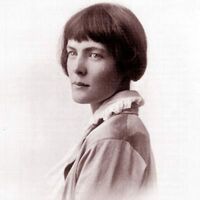
About H.D's Life and Career—An Essay by Bonnie Kime Scott Having rejected Victorian norms for modern experiments, H. D. repeatedly launched out from instructors found among the early canonized male modernists. She developed new lyric, mythic, and mystical forms in poetry and prose, and an alternative bisexual lifestyle that were little appreciated until the 1980s. Her literary contacts included Ezra Pound, Marianne Moore, William Carlos Williams, Ford Madox Ford, May Sinclair, Dorothy Richardson, Richard Aldington, Bryher, D. H. Lawrence, T. S. Eliot, Djuna Barnes, Gertrude Stein, Amy Lowell, Norman Douglas, Edith Sitwell, and Elizabeth Bowen. She was the literary editor of the Egoist (1916-1917), and admired the work of James Joyce and Virginia Woolf. Younger poets like Robert Duncan, Allen Ginsberg, May Sarton, and Denise Levertov took her as a mentor. H. D.'s literary papers are at Beinecke Library, Yale University. Autobiographies H. D. was born into the Moravian community of her artistic, musical mother, Helen (Wolle), in Bethlehem, Pennsylvania, and reared in Upper Darby, a Philadelphia suburb convenient to the University of Pennsylvania. Her astronomer father, Charles, was director of the Flower Observatory there. The Gift (written 1941-1944; published 1982) is cast in the inquiring voice of a child, who is cognizant of several generations of her family, and of her own dreams and fantasies. Her grandmother ultimately bestows a sense of her self-enabling heritage or "gift," and its mystical connection to the Moravians. Mystical access to the past through visions and the reading of "signets"--signs or heiroglyphs requiring patient deciphering--is essential to all of H. D.'s autobiographical writing. H.D.'s autobiographical writings from the middle years of her life are invaluable to the study of the gendered politics of experimental modernism, and the place of the female analysand in psychoanalysis. Ezra Pound entered her life while she was still a schoolgirl in Pennsylvania. In verses written for her, Pound gave her the persona of the "dryad," which persisted among her many self-concepts. They were twice engaged. Barbara Guest has suggested that his tutelage interfered with her studies at Bryn Mawr, which she quit in her second year. She did meet another as yet undeclared poet, Marianne Moore, while there (1904-1906). H. D. joined the same literary circles Pound traveled in when she moved to London in 1911. In a famous incident of 1913, he sent some of her verse to Harriet Monroe's Poetry Magazine, appending the signature "H.D., Imagiste." They served as models of the new poetry he was promoting. End to Torment: A Memoir of Ezra Pound by H. D. (written 1958; published 1979) explores this relationship. With Bid Me to Live (written 1933-1950, published 1960), H. D. writes herself out of what Rachel Blau DuPlessis has called "romantic thralldom" with two other literary men. She married the British poet, Richard Aldington, in 1913. Having enlisted in World War I, his fictional counterpart called for her sustaining letters to the front, yet resented her sharing verses with "Rico," the D. H. Lawrence counterpart, and flaunted his infidelities. Lawrence had a charismatic effect upon H. D. during the war years in London, but discouraged her creation of male subjects in her poetry, and objected to her relationship with Cecil Grey, the painter whom she joined in Cornwall. Grey became the father of her only surviving child, Frances Perdita Aldington (born 1919). H. D. had been anguished over the still-birth of a daughter fathered by Aldington in 1915, and the death of her brother Gilbert at the front. Bid Me to Live was part of a "madrigal cycle," including also Paint it To-Day and Asphodel (neither yet fully published). All of these works intertwined the painful demands of war and love relationships, as does the brilliant long poem, Trilogy (written 1944-1946), with its images of rebirth taken from classical, Egyptian and Christian sources. Tribute to Freud (written 1944; published gradually from 1945-1985) offers a third creative re-vision of male-inspired paradigms. H. D. was analyzed by Freud in 1933 and 1934, in an attempt to overcome writer's block. She also underwent analysis with Hans Sachs in the 1930s, with Erich Heydt in the 1950s, and was treated with intervenous shock therapy, following a major breakdown in 1946. Freud encouraged her to write straight history to breakout of the personal crisis she experienced during World War I. With Bid Me to Live she felt she was escaping also from the influence of psychoanalysis; she did revise Freud's role as analyst to something more like a medium. Spiritualism became an overriding interest in the 1940s. Communication with the dead and projections from another realm were regular tropes in her writing, including her last writing, Hermetic Definition. Bisexuality H.D.'s troubled alliance with Pound was mingled with her love of Frances Josepha Gregg, a student at the Pennsylvania Academy of Fine Arts, and the recipient of some of her earliest poems. Gregg and her mother were H. D.'s companions on the 1911 trip to London. Prefiguring other bisexual triangles she would involve herself in, H. D. planned to accompany Gregg on her honeymoon, but was prevented from doing so by Pound. The strains between lesbian and heterosexual attractions, experienced over the Gregg relationship, entered into H. D.'s novel HERmione (written 1927, the year before Radclyffe Hall's lesbian novel, The Well of Loneliness, was the subject of an obscenity trial; published 1981). The novelist and editor Bryher (Winnifred Ellerman, an heiress to a shipping fortune), was the most significant companion of her mature life. Their relationship survived until H. D.'s death in 1961, spanning Bryher's two marriages of convenience to Robert McAlmon and Kenneth Macpherson, in circumstances that included significant travel and residences mainly in London and Switzerland. H. D. has credited Bryher with saving her life during the final months of her pregnancy in 1919, when she was struck with influenza. Bryher and H. D. traveled to the Scilly Islands together in June 1919, for a month of idyllic companionship; they went to Greece (sailing by Lesbos) with H. D.'s mother in 1922, and traveled to Egypt the next year. The women made a creative trio with the artist and filmmaker Kenneth Macpherson from 1927 to 1932; Macpherson became H. D.'s lover, and Bryher's husband, and the married couple adopted H. D.'s daughter Perdita. Their collaborations included photomontages, the film journal Close Up, to which H. D. supplied poetry and reviews, and Borderline, a film in which H. D. starred with Paul Robeson. The project is one indication of H. D.'s literary connections to the Harlem Renaissance, and her attraction to the margins of modernism. Much of H.D.'s poetry published in the 1930s and 1940s appeared in Life and Letters Today, edited by Bryher. H.D. was well informed about contemporary theories of homosexuality, due both to her analysis by Freud, who pronounced her bisexual, and her friendship with sexologist Havelock Ellis, whom she met in 1919. But she was not limited to their views, particularly in HER. Her shift in interest to mother-daughter dynamics in Notes on Thought and Vision may have been a transference out of Freud's influence. However, Ellis failed to appreciate her revolutionary "bell jar" experiences of pregnancy and the unconscious, recorded in Notes on Thought and Vision, and his lack of enthusiasm may have discouraged her publishing it. Critical Repositioning and Feminist Criticism For many years H. D. was known chiefly for the stark, chiseled images and experimental rhythms of her earliest work, collected as Sea Garden (1916). This fit the imagist program of Ezra Pound. She also had a limited reputation as a classicist and translator of Greek. Feminist critics, led by Susan Stanford Friedman and Rachel Blau DuPlessis, have studied H.D.'s works for feminine lesbian, and bisexual discourses. Since the early 1980s H. D.'s epic and prose writing have received more attention, and work self-suppressed in her own lifetime has been recovered and studied. H. D.'s frequent recourse to the palimpsest can be seen as an escape from binary and hierarchical thinking associated with patriarchy. The term denotes a parchment that retains partially erased parts of earlier writings, which strain productively with new text. She titled a three-part story sequence Palimpsest (written 1923-1924), but the term also applies to her rewritings of her own selfhood in autobiographies, and to her rewritten myths. H. D. can be credited with anticipating the maternal semiotic of Julia Kristeva, and with giving a female voice to classical myths. Sandra Gilbert ("H. D.? Who Was She?," Contemporary Literature 24 [1983]: 496-511) suggests that she developed a "woman's mythology" in Trilogy, Helen in Egypt, and Hermetic Definition. Alicia Ostriker ("Thieves of Language," Signs 8, no. 1 [1982]: 68-90) includes H. D. among women poets who construct new myths to include their selves. H. D.'s Greek texts, culminating in Helen in Egypt, explore the divinity of the goddess, the sexually ecstatic Eleusinian mysteries, and the female version of patriarchal epics. A criticism from Lawrence S. Rainey ("Canon, Gender and Text," Representing Modern Texts, ed. George Bornstein, [1991]) is that in recent years H. D.'s work has been studied for the sake of content conducive to feminist solidarity, rather than aesthetic value. Yet this criticism neglects feminist critics' remarks on the formal devices of mythic mask, palimpsest, and return of the repressed, characteristic of life-writing cure, that moved H. D. beyond confinement to the divisive gender stereotypes of her day.
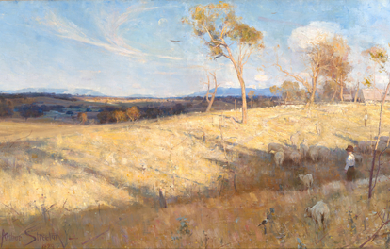
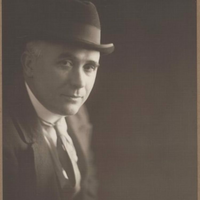
Edward George Dyson (4 March 1865– 22 August 1931) was an Australian journalist, poet, playwright and short story writer. He was the elder brother of talented illustrators Will Dyson and Ambrose Dyson. At 19, he began writing verse and, a few years later, embarked on a life of freelance journalism which lasted until his death. In 1896 he published a volume of poems, Rhymes from the Mines and, in 1898, the first collection of his short stories, Below and On Top.
Yo. Yo soy de pueblo, de ciudad y carretera, me muevo en diferentes esferas porque creo que no sólo hay ángeles rubios, también los hay con castañas melenas, no creo en clases de primera, segunda o tercera, pues todos tenemos el corazón en la misma posición. Disfruto lo mismo un concierto de violín que saborear unos tacos con queso estilo albañil, fuerte como la roca y sólo frágil cuando estoy a solas.
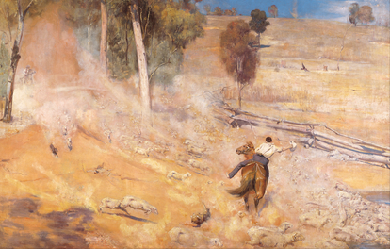
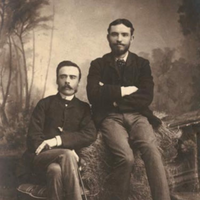
Victor James William Patrick Daley (5 September 1858– 29 December 1905) was an Australian poet. He was born at the Navan, County Armagh, Ireland, and was educated at the Christian Brothers at Devonport in England. He arrived in Australia in 1878, and became a freelance journalist and writer in both Melbourne and Sydney. Whilst in Melbourne, he met and became a friend of Marcus Clarke; later, in Sydney, he became acquainted with Henry Kendall. He is notable for becoming the first author in Australia who tried to earn a living from writing alone. In Sydney in 1898, he founded the bohemian Dawn and Dusk Club, which had many notable members such as writer Henry Lawson. He died at Sydney of tuberculosis.
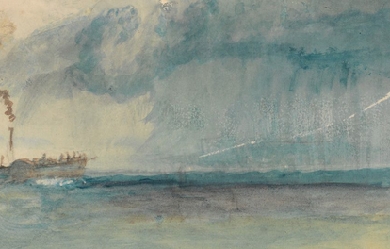
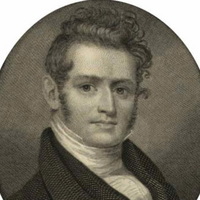
Joseph Rodman Drake (August 7, 1795– September 21, 1820) was an early American poet. Biography Born in New York City, he was orphaned when young and entered a mercantile house. While still a child, he showed a talent for writing poems. He was educated at Columbia College. In 1813 he began studying in a physician’s office. In 1816 he began to practice medicine and in the same year married Sarah, daughter of Henry Eckford, a naval architect. In 1819, together with his friend and fellow poet Fitz-Greene Halleck, he wrote a series of satirical verses for the New York Evening Post, which were published under the penname “The Croakers.” Drake died of consumption a year later at the age of twenty-five. As a writer, Drake is considered part of the “Knickerbocker group”, which also included Halleck, Washington Irving, William Cullen Bryant, James Kirke Paulding, Gulian Crommelin Verplanck, Robert Charles Sands, Lydia M. Child, and Nathaniel Parker Willis. A collection, The Culprit Fay and Other Poems, was published posthumously by his daughter in 1835. His best-known poems are the long title-poem of that collection, and the patriotic “The American Flag” which was set as a cantata for two soloists, choir and orchestra by the Czech composer Antonín Dvořák in 1892-93. “The Culprit Fay” served as the inspiration for a 1908 orchestral rhapsody of the same name by Henry Kimball Hadley. Fitz-Greene Halleck’s poem “Green be the turf above thee” was written as a memorial to Drake. Joseph Rodman Drake Park in Hunts Point, Bronx, was named for him in 1915. This park has received $180,000 of New York State funding to memorialize slave workers likely to be buried there. Critical response In the early 19th century Americans numbered Drake and his friend Halleck as a two of the leading literary personalities and talents produced by their country, but their reputations were short-lived. In April 1836, Edgar Allan Poe published a review of their work–known to Poe scholars as “The Dake-Halleck Review”– in the Southern Literary Messenger criticized both, though he thought Drake the better of the two. Poe’s essay is as much a critique of the state of criticism at that time, objecting to the factthat “at this particular moment there are no American poems held in so high estimation by our countrymen, as the poems of Drake, and of Halleck.” Looking at Drake’s The Culprit Fay, a narrative poem of 640 lines, Poe found elements to praise but wrote that “the greater part of it is utterly destitute of any evidence of imagination whatever”. He found Drake capable of description, but offered his view that description required little poetic ability and provided his own alternatives to show how simple this writing was. For Drakes’ lines: Poe offered: In Poe’s view this ability creates “a species of vague wonder at the writer’s ingenuity” in most readers, but Poe mocked it as an example of the “sublimely ridiculous” and “puerilities”, requiring the reader to “imagine a race of Fairies in the vicinity of West Point”. Works * The American Flag * The Culprit Fay: and Other Poems (1835) References Wikipedia—https://en.wikipedia.org/wiki/Joseph_Rodman_Drake
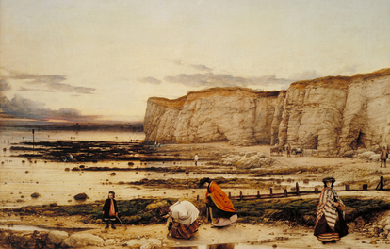
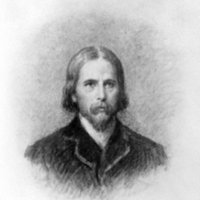
Sydney Thompson Dobell (5 April 1824– 22 August 1874) was an English poet and critic, and a member of the so-called Spasmodic school. He was born at Cranbrook, Kent. His father, John Dobell, was a wine merchant, his mother a daughter of Samuel Thompson (1766–1837), a London political reformer. The family moved to Cheltenham when Dobell was twelve years old. He was educated privately, and never attended either school or university. He refers to this in some lines on Cheltenham College in imitation of Chaucer, written in his eighteenth year. After a five-year engagement he married, in 1844, Emily Fordham, a lady of good family. Acquaintance with James Stansfeld (subsequently Sir James Stansfeld) and with the Birmingham preacher-politician George Dawson fed the young enthusiast’s ardour for the liberalism of the day, and later led to the foundation of the Society of the Friends of Italy.

“all human beings are also dream beings. dreaming ties all mankind together.” –jack kerouac a lover of my daughters a craver of my husband a hater of my mother a bastard by my father a verbal vomit harlot a harmer of the insides a liar to the outsides a destroyer of the pink lungs a friend of the destructive a master of the uh oh's a punisher of the organs a puker on religion a creeper to the creepy a harmer of reality a dreamer when inappropriate a receiver of the past a voyeur of the hidden a charmer to the eyes wide shut a seeker of the secrets a pleaser of his all mine a smasher of the system a thriver of the chaos a craver of salt ridden waves all while grateful for the grievance
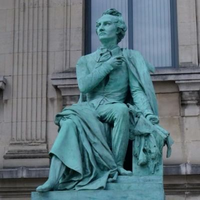
Casimir Jean François Delavigne, né le 4 avril 1793 au Havre et mort 11 décembre 1843 à Lyon, est un poète et dramaturge français. Delavigne connaît la célébrité lorsque, après la défaite de Waterloo, il publie ses Premières Messéniennes. « Les pleurs qu’il répandit sur les généreuses victimes de Waterloo, l’anathème qu’il prononça contre les spoliateurs de nos musées, et les sages conseils qu’il donna à ses compatriotes sur le besoin de s’unir contre l’étranger, tous ces sentiments exprimés en vers énergiques, trouvèrent en France des milliers d’échos et rendirent le nom de l’auteur aussi populaire que s’il s’était signalé depuis longtemps »[réf. nécessaire]. Ses origines Son père, Louis-Augustin-Anselme Delavigne, était arpenteur géographe des forêts du Roi. La chute de Louis XVI entraîne aussi celle d’Anselme, fonctionnaire royal. En 1793, la famille prend la route du Havre, où Anselme Delavigne devient armateur avec ses deux frères, Jean-Fortuné et César-Casimir. À cette époque se crée une importante liaison maritime, l’Angleterre recevant son lot d’émigrés. Lorsque la Révolution vacille sur ses arrières, quelques-uns de ceux-ci repassent la Manche pour aller rejoindre Bonchamps et La Rochejaquelein en Vendée. À ce petit jeu fort profitable (il en coûte des fortunes aux passagers), Anselme risque gros. On l’arrête et le 5 avril 1793, jour de la naissance de Casimir Delavigne, son père est au fond d’un cachot. Dans ce monde de bourgeoisie havraise, son épouse trouve une demoiselle Devienne, poétesse, artiste dramatique et confidente des Delavigne pour s’entremettre et intervenir auprès de Robespierre. Anselme se sort discrètement de ce mauvais pas et devient ce négociant estimé de ses concitoyens comme le rapporte la chronique du temps, Le Mercure de Londres, paru en 1834. Après cette entreprise, en 1808, Anselme se lance dans la faïencerie, il fabrique dans son entreprise des assiettes et des plats décoratifs mais, en 1816, les affaires sont si désastreuses qu’il ferme la fabrique. Les années d’enfance Son biographe et frère a écrit : « Il naquit au Havre le 5 avril 1793, au numéro 27 du quai Sollier dans le vieux quartier Saint-François. Il était fils d’un négociant justement considéré, son enfance ne présentait rien de remarquable. Malgré son esprit vif, il ne triompha qu’avec peine de ses premières études ». Il apprend à lire et à compter dans sa ville du Havre auprès de l’abbé Trupel puis en 1801 Casimir rejoint son frère au lycée Henri-IV, il n’a alors que 8 ans. On trouve aujourd’hui un buste de Casimir Delavigne au lycée Henri-IV. Dans ces années, il se fait remarquer—note son frère—par la bonté de son caractère et son application à l’étude. C’est à quatorze ans que ses facultés se développent. Bon écolier, son goût pour la poésie se révèle. Sur les bancs du collège il se lie d’une rare amitié avec Eugène Scribe. Ensemble ils forment des plans d’avenir. Casimir veut être poète. Scribe se destine au barreau ; il deviendra un célèbre auteur dramatique et compositeur d’opérettes aujourd’hui oubliées. En l’absence de sa famille havraise, jeune homme, Casimir est reçu, les jours de liberté, par son oncle Andrieux, avoué à Paris, un ami de Crébillon qui aime et cultive les belles lettres. Casimir lui ayant soumis ses premiers vers, il lui prédit les plus amers désappointements et l’encourage surtout à « se disposer à faire son droit ». Poème pour la naissance du roi de Rome Alors qu’il est encore élève, la naissance du roi de Rome lui offre l’occasion de se faire remarquer. Il compose un « dithyrambe, renfermant des beautés poétiques de l’ordre le plus élevé, écrit son frère. Son oncle Andrieux, juge si bien la chose qu’il lui promet alors une carrière et de véritables succès. Cet encenseur de Napoléon Ier, n’est pourtant pas un foudre de guerre. Il est dispensé de service militaire, réformé, en raison d’une légère surdité qui par la suite disparaîtra complètement. Ce poème fameux, remarqué à la cour, par le comte Antoine Français de Nantes, alors directeur des Droits réunis (contributions indirectes), lui permet de trouver dans ses services un asile, sous couvert d’un petit emploi. Il entre dans son bureau en 1813, sa seule obligation étant de s’y présenter à chaque fin de mois. Il s’efforce de mériter cette bienveillance par ses succès. Auteur d’un poème épique Charles XII à Narva, l’Académie lui remarque un esprit sage, de brillantes qualités, et lui accorde une mention honorable. Rue des Rosiers, au coin de la rue Pavée, la colonie Delavigne est réunie. Germain, son frère et Casimir sont devenus soutiens de famille. Leur père Anselme est ruiné, son épouse (Meyotte), sa fille Louise et le petit Fortuné, étudiant au lycée Napoléon, l’accompagnent. En outre, la tante Aupoix, sœur d’Anselme accompagnée de ses deux serviteurs noirs, Rose et César, qui l’ont accompagnée depuis Saint-Domingue, a trouvé, elle aussi, refuge chez ses neveux. Même la nourrice du poète, la vieille Babet, a suivi la famille depuis le Havre. La découverte de la vaccine L’année suivante, en 1814, le sujet académique imposé est « La découverte de la Vaccine ». Il tente une nouvelle fois la fortune. Il rencontre chez le comte Français le docteur Parisot, secrétaire perpétuel de l’Académie royale de médecine. Parisot, qui fait lui-même de bons vers, lui donne les explications les plus précises et ils vont même de compagnie vacciner dans les campagnes proches de Paris. Quelques vers techniques consciencieux donnent avec un rare bonheur les effets de ces vaccins. Ces vers seront alors extrêmement appréciés et dans les livres scolaires de littérature choisie, ces vers étaient encore présents jusqu’en 1950. Voici 14 des 218 vers que contient le poème : « Par le fer délicat dont le docteur arme ses doigts, Le bras d’un jeune enfant est effleuré trois fois. Des utiles poisons d’une mamelle impure, Il infecte avec art cette triple piqûre. Autour d’elle s’allume un cercle fugitif, Le remède nouveau dort longtemps inactif. Le quatrième jour a commencé d’éclore, Et la chair par degrés se gonfle et se colore. La tumeur en croissant de pourpre se revêt, S’arrondit à la base, et se creuse au sommet. Un cercle, plus vermeil de ses feux l’environne ; D’une écaille d’argent l’épaisseur la couronne ; Plus mûre, elle est dorée ; elle s’ouvre, et soudain Délivre la liqueur captive dans son sein ».Le ton, considéré comme trop didactique, l’empêche d’avoir le prix, mais d’un suffrage unanime, l’Académie lui décerne un accessit. Les trois premières Messéniennes Cependant les désastres de l’Empire avaient commencé et c’est avec une profonde douleur qu’il assiste à la chute de l’empereur et à l’invasion de la France. Après la funeste bataille de Waterloo, en juillet 1815, il publie ses premières Messéniennes : Waterloo, Les Malheurs de la guerre, puis Jeanne d’Arc et La Mort de Jeanne d’Arc. Les armées étrangères occupaient la France, les bons citoyens déploraient que leur pays fût ainsi mis hors de combat après 25 années de victoires. Le poète prend sa lyre et chante les vaincus. Il se fait courtisan des braves de la Vieille Garde. Dès lors, il mérite d’être appelé le poète national, le poète de la patrie. Il exprime, avec verve et enthousiasme, les regrets qui sont au fond des cœurs. Il fait acte de courage en se déclarant contre les vainqueurs. Quand il voit le musée du Louvre dévasté par les envahisseurs étrangers, ses statues emportées comme butins de guerre, il proteste avec éloquence contre ces abus de la victoire et adresse de touchants adieux à ces merveilles des arts. Comme citoyen, il rappelle fièrement aux étrangers que s’ils pouvaient emporter des statues, ils n’emporteraient pas nos titres de gloire. Bientôt les armées étrangères quittent le pays mais les rivalités de partis, l’avidité des faux serviteurs menacent les libertés renaissantes, alors celui qui avait rendu hommage aux morts de Waterloo fait un appel à l’union, celui qui sortait des bancs universitaires gourmande les partis avec une sagesse précoce. Son dernier adieu aux armées qui évacuent le sol français est un hymne à la concorde qui rend les peuples invincibles. Les livres second et troisième des Messéniennes confortent la popularité de l’écrivain, ils abordent l’histoire de la Grèce antique, Christophe Colomb, et des événements qui relatent la vie de ce début du XIXe siècle. La chute de l’empereur que Casimir Delavigne avait résumé ainsi : « Napoléon a oublié ses origines. Fils de la Liberté (1789) tu détrônas ta mère ». Le comte français est naturellement éloigné des affaires et Casimir perd son « emploi ». Le baron Pasquier, alors garde des Sceaux et chancelier de France, lit avec émotion le poème sur l’exil de Napoléon Ier, et le fait lire au roi qui le trouve très beau. Il fait appeler l’auteur et crée pour lui la place de bibliothécaire de la chancellerie. Les Vêpres siciliennes Libre de son temps et sécurisé par son emploi, toujours dans le genre héroïque, Casimir écrit en 1818 les Vêpres siciliennes, dont il sollicite la lecture au Théâtre-Français. Après deux ans d’attente, l’ouvrage est enfin écouté avec la défiance et la défaveur qu’accueille, ordinairement le coup d’essai d’un jeune homme. Un seul comédien, Thénard, trouve l’ouvrage intéressant et déclare : « J’y trouve la preuve que l’auteur un jour écrira très bien la Comédie ». La pièce est reçue mais à correction. Un an plus tard cette prédiction se réalise, bien que Casimir ait réclamé ensuite et obtenu une seconde lecture dont le résultat sera le refus définitif. L’aréopage appelé à se prononcer sur le mérite de la tragédie ne l’admet qu’à condition que l’auteur n’exige jamais qu’elle soit jouée. Une des dames qui siège au nombre des juges se montrera plus sévère que les autres, elle donne pour raison de son refus qu’il serait scandaleux de mettre le mot vêpres sur une affiche de spectacle. C’est à cette époque que Victor Hugo écrit dans la Gazette du Théâtre : « Casimir Delavigne – Comme auteur tragique, il a du mouvement et manque de sensibilité. Comme auteur comique a de l’esprit et point de gaieté ». Jugement sévère. Trois mois plus tard, Les Comédiens sont écrits, la plus vive et la plus gaie des comédies de l’époque. Elle sera jouée jusqu’en 1861. En 1818, l’Odéon ayant brûlé, le duc d’Orléans, le futur roi des Français (Louis-Philippe) fait reconstruire la salle et lui accorde le privilège de Second Théâtre-Français. Un comité de lecture de gens de lettres reçoit alors avec la plus grande ferveur les Vêpres siciliennes et l’on décide, que parmi tous les ouvrages reçus, celui-ci serait le premier joué au théâtre de l’Odéon. La première représentation a lieu le 23 octobre 1819, c’est un triomphe, la pièce attire une affluence considérable durant trois cents représentations successives, confirmant ainsi la qualité du poète et le choix du comité de lecture. Le théâtre encaisse plus de 400 000 francs lors des 100 premières représentations, somme considérable à cette époque. Le duc d’Orléans le fait bibliothécaire du Palais-Royal En 1821, pendant qu’il poursuivait sa carrière laborieuse avec Le Paria, les événements politiques marchaient très vite. Le ministre n’était plus le même, et comme le caractère indépendant et l’amour de la patrie du poète ne pouvaient convenir aux nouveaux agents du pouvoir, la place de bibliothécaire fut supprimée. Le duc d’Orléans, apprenant ce coup, lui offrit la place de bibliothécaire du Palais-Royal en lui écrivant : « Le tonnerre est tombé sur votre maison, je vous offre un appartement dans la mienne ». Casimir accepta avec reconnaissance. Le 15 décembre 1824, il acquiert une grande bâtisse blanche, construite une dizaine d’années auparavant, admirablement située sur une pente douce menant à la Seine, « La Madeleine », appartenant au général d’Empire Joseph François Dominique de Brémond (1773-1852). Ce bien était chargé d’histoire, car il avait appartenu au XIIe siècle au petit-fils de Richard de Vernon, Adjutor qui devint saint Adjutor, patron des mariniers. Il y fonda un lieu de prière sur lequel les moines bénédictins bâtirent un prieuré. Ce prieuré subsista jusqu’à la Révolution française. C’est sur les ruines de ce prieuré que le général de Brémond bâtit sa superbe demeure. Il y vint souvent, soit qu’il voulut trouver calme et solitude pour travailler, soit qu’il y vint chercher un lieu de repos. Scribe et son frère Germain, qui écrivaient ensemble, s’y installaient pour achever un vaudeville ou un livret d’opéra. Seul, Fortuné, le cadet fort discret n’y vint jamais, retenu par sa charge d’avoué à Paris. Bien que son amour pour la France, une grande fermeté de caractère jointe à une éloquence naturelle et une rectitude de jugement lui eussent permis de jouer un rôle utile et brillant dans les affaires du pays, il s’y refusa constamment, convaincu que les lettres, comme la politique, exigeaient un homme entier. Il refusa ainsi d’entrer à la chambre des députés, qui lui fut offert d’abord par la ville du Havre et ensuite par la ville d’Évreux. L’École des vieillards À ses yeux le plus sûr moyen de gagner les suffrages qui lui manquaient était d’écrire et de publier un titre nouveau. Ce fut L’École des vieillards, pour lequel il s’inspira de la pièce d’Alberto Nota, Les Premiers pas vers le mal. Cette pièce atteste un progrès réel de son auteur, et un critique en 1825 peut écrire dans le Mercure de Londres : « Vu du côté moral, elle offre une leçon utile à la vieillesse, sans l’immoler à la risée publique, sans acheter d’applaudissements aux dépens d’un âge qu’on ne saurait trop respecter ». Une revue des gens de lettres de 1834 la trouva moins originale que les œuvres de Béranger ou Lamartine, mais lui accorda « un talent si pur et si étendu qu’il peut se prêter avec grand succès à l’innovation littéraire ». Une réconciliation s’opéra avec les responsables du Théâtre-Français où l’École des vieillards attira un fidèle public. Au lendemain de l’École des vieillards, Casimir Delavigne est un homme célèbre que les jeunes poètes sont fiers de consulter. En 1825, l’Académie française se décida à ouvrir ses portes au poète que le public du théâtre de l’Odéon semblait avoir adopté. Elle le dédommagea de sa longue attente après les deux tentatives infructueuses. La première fois, il avait pour rival le célèbre Mgr Frayssinous, évêque d’Hermopolis. Son deuxième concurrent fut l’archevêque de Paris, Mgr de Quélen. Lorsque des amis vinrent encore conseiller à Casimir Delavigne de se remettre sur les rangs, il repoussa leur offre, disant avec esprit : « Non, cette fois on m’opposerait le pape ». Pourtant, il finit par accepter de tenter sa chance au fauteuil du comte Ferrand. Son élection fut grandiose, obtenant 27 voix sur 28. Il ne participa que rarement à ces réunions de la société des gens de lettres. Il y soutint la candidature de Lamartine contre celle de Victor Hugo. Charles X lui accorda une pension de 1 200 francs. Mais celui-ci la refusa comme la Légion d’honneur que Monsieur de La Rochefoucault lui offrait au nom du roi, n’ayant semble-t-il pas confiance dans l’orientation politique du gouvernement mis en place, en raison d’une sévère restriction des maigres libertés accordées. Il préféra rester indépendant d’un pouvoir qu’il pouvait être amené à combattre. Voyage en Italie Un travail assidu compromit une santé déjà affaiblie. Les médecins ordonnèrent un voyage en Italie. Pendant ce périple dans le berceau des arts, il obtint un véritable triomphe tant il reçut de témoignages d’admirateurs. Pendant ces trois mois passés à Naples, il se refit une santé. Il visita Rome et Venise. C’est dans cette cité qu’il conçut la tragédie Marino Faliero. Pendant cet agréable séjour en Italie, il rédigea sept nouvelles Messéniennes. La première de Marino Faliero fut donnée au théâtre de la Porte-Saint-Martin le 30 mai 1829. Il rencontra à Rome, en 1826, sa future épouse, Élise de Courtin. Élevée au pensionnat d’Écouen chez Mme Campan, elle avait été remarquée par l’empereur Napoléon Ier. Abandonnée par ses parents elle voulut s’empoisonner. La reine Hortense, mère du futur Napoléon III, elle aussi ancienne élève d’Écouen, émue par la situation de cette orpheline en fit sa protégée. Au fil des ans, la jeune fille devint sa lectrice et sa compagne préférée. Casimir entretint une correspondance assidue avec la jeune Élise d’un an plus âgée que lui. Il dut attendre trois ans le consentement de sa jolie conquête. Dès son retour à Paris, il offrit aux Parisiens une nouvelle œuvre, La Princesse Aurélie, spirituelle comédie qui ne connut qu’un bref succès. Un jeune poète que Casimir avait encouragé, écrivit maladroitement, dans un hebdomadaire, un article satirique dirigé contre Charles X. Le nommé Fonta, arrêté et jugé, fut jeté en prison. Casimir qui avait blâmé la violence de l’article fut profondément affligé par la rigueur de la peine : cinq années de prison, enfermé, avec des escrocs et des voleurs. La libération de ce garçon, fut l’occasion d’une campagne et d’une demande de Casimir auprès du ministre de l’intérieur puis du préfet « Mariguin ». Il reçut un accueil sévère. Le préfet qui l’avait écouté lui dit : « Nous sommes forts, Monsieur, nous ne craignons rien, il faut que justice se fasse ». Malgré ses efforts il ne put rien obtenir. Hymne à la gloire du peuple de Paris Quelques mois après, la Révolution de Juillet, en 1830, il prouva combien était factice la force sur laquelle le régime de Charles X s’appuyait. Cette nouvelle vint surprendre Casimir à la campagne, à « la Madeleine » de Pressagny-l’Orgueilleux. Rentré à Paris, il lui fut demandé de composer un hymne à la gloire du peuple. Il composa La Parisienne pour chanter ses concitoyens morts pour la patrie pendant la Révolution de Juillet. Ce chant populaire eut une grande vogue. Cette marche nationale favorable à la famille d’Orléans comportait sept couplets avec ce refrain : « En avant, marchons Contre les canons ; À travers le fer, le feu des bataillons, Courons à la victoire. (bis) » Il se rendit à Neuilly chez le duc d’Orléans (le châtelain de Bizy) qui avait été son protecteur, et qui était devenu lieutenant général du Royaume. Casimir Delavigne se précipitait ainsi au-devant de la réussite. Il fut d’ailleurs, toujours en excellent termes avec ses voisins de l’autre rive de la Seine, et souvent reçu aussi au château de Saint-Just qui, après avoir connu des propriétaires successifs (le chevalier Suchet, puis son frère le maréchal duc d’Albuféra) en 1831, devint le domaine d’un monsieur Lopez avec qui il sympathisa. La Révolution de 1830 accomplie, Casimir reprit sa tragédie Louis XI, interrompue depuis la mort de l’acteur Talma. Selon certains critiques, ce fut le chef-d’œuvre de Casimir Delavigne, tant les portraits des personnages sont nuancés et fidèles aux mœurs du temps. La première représentation eut lieu le 11 février 1832. Mais le public n’était plus réceptif à ce genre d’œuvre théâtrale. Victor Hugo avait triomphé avec Hernani. Il avait supplanté Casimir dans le cœur des Français. Pourtant sa tragédie Louis XI, après l’épidémie de choléra que connut Paris, connaît un nouveau succès. Son mariage Le 1er novembre 1830, Casimir Delavigne contracta mariage avec Élise de Courtin ; elle devait bientôt lui donner un fils, ce qui rendit son bonheur complet. Son frère Germain épousa le même jour Mademoiselle Letourneur. Ils se marièrent à minuit à l’église Saint-Vincent-de-Paul. « Nous nous marions tous deux jeudi soir, dirent-ils au roi. –Ah ! – À la même heure. –Ah ! –Dans la même église. –Ah ! Et avec la même femme ? » Ce fut une joie pour la reine Hortense que cette union de sa fille d’adoption avec le poète pour lequel elle avait tant de sympathie. Germain obtint, en 1832, le poste de conservateur du Mobilier de la couronne et directeur des Menus Plaisirs du roi. Cette promotion lui permit d’installer toute sa famille au no 2 de la rue Bergère. Casimir, de retour à la Madeleine en compagnie d’Élise, qui lui avait donné un fils dont l’existence est souvent évoquée dans ses tendres soucis, y travaillait abondamment. Il avait fait planter un marronnier qui reflétait pour lui les préoccupations de son épouse au travers de son feuillage plus ou moins fourni au cours des saisons. Serait-il encore identifiable dans le parc actuel ? Il écrivait alors, sur une trame due à Shakespeare Les Enfants d’Édouard. La pièce, le matin de la première, le 18 mai 1833, fit l’objet d’une interdiction. Il reçut un accueil défavorable auprès du ministre de l’Intérieur, Adolphe Thiers, mais, après une courte discussion devant le roi, l’interdiction fut levée. Louis-Philippe qui ne pouvait être présent à la représentation le félicita par un court billet qui commençait ainsi : « J’apprends avec grand plaisir, mon cher Casimir, le succès de votre pièce et je ne veux pas me coucher sans vous avoir fait mon compliment… » On comprend mieux l’attachement du poète à la réussite de Louis-Philippe. Les dernières années de sa vie La douloureuse maladie du foie, soignée au cours de son voyage en Italie recommençait à altérer les jours de Casimir. Il éprouvait de violentes douleurs. Les médecins ne jugeaient pas ce mal comme pouvant nuire à sa vitalité. Ce fut au milieu de douleurs presque continuelles qu’il écrivit Don Juan d’Autriche, comédie pleine de verve, qui ne lui fit pas moins honneur que ses grandes tragédies. La première fut donnée le 17 octobre 1835 et six mois plus tard, le 19 avril 1836, un acte en vers : Une famille au temps de Luther qui n’eut pas beaucoup de succès. Il se rendit, assez désespéré, à sa retraite charmante de Normandie, « la Madeleine », où depuis 1830 il passait tous ses étés. Il aimait beaucoup cette vaste demeure, et sa vue imprenable sur les îles de la Seine. Là, il espérait trouver un peu de soulagement. Il entreprit une œuvre qu’il préférait à tous ses ouvrages : La Popularité, comédie de mœurs en cinq actes et en vers. Après plusieurs retards, la pièce fut représentée le 1er décembre 1838. Elle ne fit que de maigres recettes ; le public était las de Casimir Delavigne. Le 20 janvier de l’année suivante paraît une nouvelle tragédie, La Fille du Cid. Elle n’eut pas un sort plus heureux, le succès fut sans durée. C’est à la fin de cette période douloureuse de l’automne 1839, qu’il dut vendre sa chère Madeleine avec tant de regrets. « Je n’ai point de fortune », écrit-il en 1833, et c’est vrai. À ses ennuis de santé, se sont ajoutés ceux d’argent et, le 9 août 1839, il est contraint d’abandonner « la Madeleine ». La propriété fut vendue 90 750 francs. Quelle tristesse pour le poète, qui écrit alors : « Adieu Madeleine chérie, Qui te réfléchis dans les eaux, Adieu ma fraîche Madeleine ! Madeleine, adieu pour jamais ! Je pars, il le faut, je cède ; Mais le cœur me saigne en partant. » Le poème complet comporte 11 strophes de 8 vers. Il a probablement été rédigé au château de Saint-Just, chez son ami Lopez. Les deux façades de ces demeures sont en vis-à-vis : la Madeleine sur la rive droite de la Seine et Saint-Just sur la rive gauche. Il rentra à Paris pour y suivre l’éducation du fils qui lui était né 9 ans auparavant, et surtout en raison de sa ruine. À cette époque, une descendante du grand Pierre Corneille, que le défaut de fortune plaçait dans de grandes difficultés, vint solliciter un prêt de 500 francs. Casimir ne les avait pas. Il ne put que la rassurer et l’adresser sur-le-champ au duc d’Orléans, « Ce prince universellement aimé et dont la disparition fut une calamité publique », écrivit son frère Germain. Le jour même, la somme demandée fut accordée. Mais ce devait être sa dernière intervention et bonne action. La dernière tragédie à laquelle il travaillait semble bien pressentir sa mort, il écrivait : « Mes jours sont pleins, et bons à moissonner. Dieu qui me les compta pouvant moins m’en donner : les reprendre est son droit… » À partir de ce moment, sa santé déjà si altérée continuait à décliner, malgré les soins empressés du docteur Horteloup. Lorsque Casimir fut surpris par la mort, quatre actes de la tragédie Mélusine étaient écrits, dans un genre tout à fait nouveau, et dont le sujet admettait toutes les richesses de la poésie. Depuis qu’il avait vendu « la Madeleine », il passait tous les ans la belle saison à Paris. Scribe, son ami de toujours, qui connaissait son goût pour la campagne et qui espérait qu’il pourrait y trouver quelques soulagements, lui offrit sa charmante maison du Montalais, à Saint-Jean-Lespinasse dans le Lot. Casimir s’y établit et trouva là quelques douceurs pendant trois mois. Quand il revint à Paris, il sentit qu’il ne pourrait résister à la saison, et il retourna chercher un climat plus doux dans le midi. Il se décida à partir malgré sa faiblesse, accompagné de sa femme et de son fils. Il quitta Paris le 2 décembre 1843. Il soutint la fatigue avec plus de courage que de force jusqu’à Lyon où il fut obligé de s’arrêter. C’est en vain qu’il lutta contre le mal, il lui fallut céder et rester à Lyon. Dans ses derniers moments, le 11 décembre à neuf heures du soir, il se faisait faire la lecture par sa femme. Comme celle-ci, trop émue, sautait des lignes, il la pria doucement de bien vouloir recommencer. Cependant quelques minutes après il parut cesser d’écouter la lecture, et posant sa tête sur sa main, murmura quelques mots, puis retombant sur son oreiller, sembla s’endormir. C’est ainsi qu’il s’éteignit dans la force de l’âge et du talent. La perte de Casimir suscita des profonds regrets. On vit se presser à ses funérailles tout ce que Paris renfermait de plus distingué, dans tous les genres et de tous les rangs. On y remarqua entre autres, Victor Hugo qui prononça au nom de l’Académie française l’éloge funèbre de celui qui fut le plus jeune académicien (35 ans), le dernier des classiques, et sans doute un des premiers romantiques. Le roi ordonna que son portrait et son buste fussent placés dans la Galerie de Versailles. Le Havre, sa ville natale, décida qu’un de ses quais porterait son nom et qu’une statue serait élevée sur une place de la ville. Elle y fut érigée, avenue du général Archinard. Épargnée par les fléaux de la dernière guerre elle se dresse actuellement en compagnie d’un autre illustre enfant du Havre : Bernardin de Saint-Pierre (1737-1814) au pied du bel escalier de pierre du Palais de Justice, aux côtés de deux lions débonnaires. La ville du Havre sauvait ainsi ces deux célébrités de l’oubli. En cette même année 1843, messieurs les sociétaires de la Comédie-Française (qui avait succédé au Théâtre-Français), arrêtèrent en assemblée générale, que le buste de Casimir Delavigne serait placé dans leur foyer au milieu des portraits de tous les grands hommes qui ont illustré ce théâtre. L’œuvre officielle de Casimir Delavigne représente une quinzaine de pièces de théâtre, une trentaine de poésies dont Les Messéniennes, des épîtres, des études sur l’antiquité, quatre chants populaires, ainsi que de nombreuses nouvelles et autres pièces en prose. Postérité Telle fut la gloire passagère d’un poète, considéré en son propre temps comme insurpassé et insurpassable, oublié aujourd’hui des publications littéraires et dont seule subsiste la Vaccine et la courte magnificence d’une bâtisse bourgeoise, pas très belle, mais admirablement implantée dans cet ancien domaine du marquis de Tourny à Pressagny-l’Orgueilleux. Balzac l’admirait éperdument et puisait son inspiration dans Les Vêpres Siciliennes à une époque où il n’était pas encore connu. Dans Illusions perdues (1836-1843), Les Petits Bourgeois (1855), Les Employés ou la Femme supérieure (1838), Casimir Delavigne est abondamment cité comme un génie. Flaubert, au contraire, l’appelle « un médiocre monsieur […] qui épiait le goût du jour et s’y conformait, conciliant tous les partis et n’en satisfaisant aucun, un bourgeois s’il en fut, un Louis-Philippe en littérature. » Il lui reproche surtout la forme de son évolution littéraire, qui prouve, selon lui, que Casimir Delavigne « s’est toujours traîné à la remorque de l’opinion ». Il est inhumé à Paris au cimetière du Père-Lachaise (division 49). Depuis 1864, l’ancienne rue Voltaire, dans le 6e arrondissement de Paris, porte le nom de rue Casimir-Delavigne. Une rue et un quai du Havre portent également le nom du poète. Publications partielles ThéâtreLes Vêpres siciliennes, tragédie en cinq actes, 1820 Les Comédiens, comédie Le Paria, 1821 L’École des vieillards, 1823 Marino Faliero, 1829 Don Juan d’Austriche, 1835 Les Messéniennes, 1818Divers. Charles VI, opéra en cinq actes, musique de Fromental Halevy, en collaboration avec son frère Germain (1843)Œuvres complètes, 1836, nouvelle édition revue et corrigée avec œuvres posthumes Derniers chants, Poëmes et Ballade sur l’Italie, Paris, Didier libraire-éditeur, 1855. Chants populaires, Discours, Épîtres, Études sur l’antiquité, Poésies de jeunesse Sources Notice biographique tirée des Œuvres complètes de Casimir Delavigne, Paris, H. L. Delloye & V. Lecou, 1836. Mme Fauchier-Delavigne, Casimir Delavigne intime, Paris, SFIL, 1907. Bulletin municipal de Pressagny-l’Orgueilleux, no 25, 2006, p. 64-76. Les références Wikipedia – https ://fr.wikipedia.org/wiki/Casimir_Delavigne

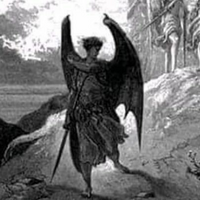
Sale el humo cada vez que me presento, Se abren la tumba de los muertos, Se oyen trompetas, tambores y se escucha un soneto, Empiezan a temblar los simientos, Parpadean las luces del techo, Pentagrama dibujado con sal en el suelo, Llamas ardientes salen de mis ojos, boca y dedos, Alfombra roja se extiende delante de mis pisadas, Sentirás la piel erizada, Respiración aguitada, Olor a azufre en la casa abandonada, Lo que quiero es poseer tu alma, Hijo de la obscuridad, El amo de la tempestad, Deidad escrita en escrituras de la antigüedad, Me ha llamado de distintas formas la humanidad, Diablo, Rey de las tinieblas, Satanás, Pero para ti es sencillo llamame "su majestad".


